Math Is Fun Forum
You are not logged in.
- Topics: Active | Unanswered
#826 2020-12-08 00:07:46
- Jai Ganesh
- Administrator

- Registered: 2005-06-28
- Posts: 52,164
Re: crème de la crème
792) Gerhard Domagk
Gerhard Domagk, full name Gerhard Johannes Paul Domagk, (born October 30, 1895, Lagow, Brandenburg, Germany—died April 24, 1964, Burgberg, near Königsfeld, West Germany [now in Germany]), German bacteriologist and pathologist who was awarded the 1939 Nobel Prize for Physiology or Medicine for his discovery (announced in 1932) of the antibacterial effects of Prontosil, the first of the sulfonamide drugs.
Domagk earned a medical degree from the University of Kiel in 1921. He briefly taught at the University of Greifswald (1924–25) before joining the faculty of the University of Münster. In 1927 he became director of the I.G. Farbenindustrie (Bayer) Laboratory for Experimental Pathology and Bacteriology in Elberfeld (now in Wuppertal). There, inspired by the ideas of Paul Ehrlich, he began testing newly developed dyes for their possible effects against various infections. He noticed the antibacterial action of one of the dyes against streptococcal infection in mice. The dye, Prontosil red, was then tried clinically against streptococcal infections in humans with great success. The active component of Prontosil turned out to be sulfanilamide, which became another important sulfa drug.
Unable to accept the Nobel award at the time because of Nazi German policy, Domagk later (1947) received the gold medal and diploma. He also was active in research on tuberculosis and cancer.
Gerhard Johannes Paul Domagk was born on October 30, 1895, at Lagow, a beautiful, small town in the Brandenburg Marches. Until he was fourteen he went to school in Sommerfeld, where his father was assistant headmaster. His mother, Martha Reimer, came from farming stock in the Marches, where she lived in Sommerfeld until 1945 when she was expelled from her home; she died from starvation in a refugee camp.
Domagk himself was, from the age of 14, at school in Silesia until he reached the upper sixth form. He then became a medical student at Kiel and, when the 1914-1918 War broke out, he served in the Army, and in December 1914 was wounded. Later he was sent to join the Sanitary Service and served in, among other places, the cholera hospitals in Russia. During this time he was decisively impressed by the helplessness of the medical men of that time when they were faced with cholera, typhus, diarrhoeal infections and other infectious diseases. He was especially strongly influenced by the fact that surgery had little value in the treatment of these diseases and even amputations and other forms of radical treatment were often followed by severe bacterial infections, such as gas gangrene.
In 1918 he resumed his medical studies at Kiel and in 1921 he took his State Medical Examinations and graduated. He undertook laboratory work under Max Bürger on creatin and creatinin, and later metabolic studies and analysis under Professors Hoppe-Seyler and Emmerich.
In 1923 he moved to Greifswald and there became, in 1924, University Lecturer in Pathological Anatomy. In 1925 he held the same post in the University of Münster and in 1958 became professor of this subject. During the years 1927-1929 he was, however, given leave of absence from the University of Münster to do research in the laboratories of the I.G. Farbenindustrie, at Wuppertal. In 1929 a new research institute for pathological anatomy and bacteriology was built by the I.G. Farbenindustrie and there, in 1932, Domagk made the discovery for which his name is so well known, the discovery that earned him the Nobel Prize in Physiology or Medicine for 1939, namely, the fact that a red dye-stuff, to which the name «prontosil rubrum» was given, protected mice and rabbits against lethal doses of staphylococci and haemolytic streptococci. Prontosil was a derivative of sulphanilamide (p-aminobenzenesulphonamide) which the Viennese chemist, Gelmo, had synthesized in 1908.
Domagk was, however, not satisfied that prontosil, so effective in mice, would be equally effective in man, but it so happened that his own daughter became very ill with a streptococcal infection, and Domagk, in desperation, gave her a dose of prontosil. She made a complete recovery, but Domagk omitted mentioning the recovery of his daughter from the report on the effect of the drug, waiting until 1935 when results were available from clinicians who had tested the new drug on patients. During subsequent years much work was done in various countries on this class of antibacterial compound and some thousands of derivatives of sulphanilamide have been produced and tested for their antibacterial properties. Domagk’s work has thus given to medicine, and also to surgery, a whole new series of weapons that are effective against many infectious diseases.
The discovery of the antibacterial action of the sulphonamides was not, however, Domagk’s only contribution to chemotherapy. He also discovered the therapeutic value of the quaternary ammonium bases and he also extended, in collaboration with Klarer and Mietzsch, his work on the sulphonamides. Later, he attacked the problem of the chemotherapy of tuberculosis, developing for this the thiosemicarbazones (Conteben) and isonicotinic acid hydrazide (Neoteben). His work has undoubtedly resulted in more effective control of many infectious diseases which nowadays have lost the terrors they formerly caused. The supreme aim of chemotherapy is, in Domagk’s opinion, the cure and control of carcinoma and he was convinced that this will be, in the future, achieved.
Domagk held honorary doctorates of the Universities of Bologna, Münster, Cordoba, Lima, Buenos Aires, and Giessen. He was made Knight of the Order of Merit in 1952, was awarded the Grand Cross of the Civil Order of Health of Spain in 1955. Other honours and distinctions bestowed upon him were: Paul Ehrlich Gold Medal and Paul Ehrlich Prize, University of Frankfurt (1956); Foreign Member of the British Academy of Science and of the Royal Society (1959); Honorary Member of the German Dermatological Society (1960); Japanese Order of Merit of the Rising Sun (1960).
In 1925 Domagk married Gertrud Strübe. They had three sons and one daughter.
Retiring to his old university of Münster, when laboratory work was no longer possible for him, he had devoted himself to the experimental (chemotherapeutic) study of carcinoma and to the dissemination of modern knowledge about it among the students and others interested in it. His recreation was painting.
Dr Domagk died on April 24, 1964.
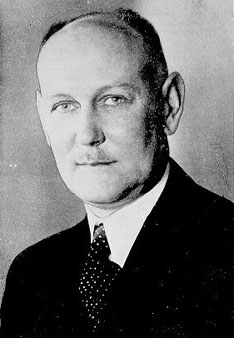
It appears to me that if one wants to make progress in mathematics, one should study the masters and not the pupils. - Niels Henrik Abel.
Nothing is better than reading and gaining more and more knowledge - Stephen William Hawking.
Offline
#827 2020-12-10 00:56:12
- Jai Ganesh
- Administrator

- Registered: 2005-06-28
- Posts: 52,164
Re: crème de la crème
793) P.A.M. Dirac
P.A.M. Dirac, in full Paul Adrien Maurice Dirac, (born August 8, 1902, Bristol, Gloucestershire, England—died October 20, 1984, Tallahassee, Florida, U.S.), English theoretical physicist who was one of the founders of quantum mechanics and quantum electrodynamics. Dirac is most famous for his 1928 relativistic quantum theory of the electron and his prediction of the existence of antiparticles. In 1933 he shared the Nobel Prize for Physics with the Austrian physicist Erwin Schrödinger.
Dirac’s mother was British and his father was Swiss. Dirac’s childhood was not happy—his father intimidated the children, both at home and at school where he taught French, by meticulous and oppressive discipline. Dirac grew up an introvert, spoke only when spoken to, and used words very sparingly—though with utmost precision in meaning. In later life, Dirac would become proverbial for his lack of social and emotional skills and his incapacity for small talk. He preferred solitary thought and long walks to company and had few, though very close, friends. Dirac showed from early on extraordinary mathematical abilities but hardly any interest in literature and art. His physics papers and books, however, are literary masterpieces of the genre owing to their absolute perfection in form with regard to mathematical expressions as well as words.
On his father’s wish for a practical profession for his sons, Dirac studied electrical engineering at the University of Bristol (1918–21). Having not found employment upon graduation, he took two more years of applied mathematics. Albert Einstein’s theory of relativity had become famous after 1919 through the mass media. Fascinated with the technical aspect of relativity, Dirac mastered it on his own. Following the advice of his mathematics professors, and with the help of a fellowship, he entered the University of Cambridge as a research student in 1923. Dirac had no teacher in the true sense, but his adviser, Ralph Fowler, was then the only professor in Cambridge at home with the new quantum theory being developed in Germany and Denmark.
In August 1925 Dirac received through Fowler proofs of an unpublished paper by Werner Heisenberg that initiated the revolutionary transition from the Bohr atomic model to the new quantum mechanics. In a series of papers and his 1926 Ph.D. thesis, Dirac further developed Heisenberg’s ideas. Dirac’s accomplishment was more general in form but similar in results to matrix mechanics, another early version of quantum mechanics created about the same time in Germany by a joint effort of Heisenberg, Max Born, Pascual Jordan, and Wolfgang Pauli. In the fall of 1926 Dirac and, independently, Jordan combined the matrix approach with the powerful methods of Schrödinger’s wave mechanics and Born’s statistical interpretation into a general scheme—transformation theory—that was the first complete mathematical formalism of quantum mechanics. Along the way, Dirac also developed the Fermi-Dirac statistics (which had been suggested somewhat earlier by Enrico Fermi).
Satisfied with the interpretation that the fundamental laws governing microscopic particles are probabilistic, or that “nature makes a choice,” Dirac declared quantum mechanics complete and turned his main attention to relativistic quantum theory. Often regarded as the true beginning of quantum electrodynamics is his 1927 quantum theory of radiation. In it Dirac developed methods of quantizing electromagnetic waves and invented the so-called second quantization—a way to transform the description of a single quantum particle into a formalism of the system of many such particles. In 1928 Dirac published what may be his greatest single accomplishment—the relativistic wave equation for the electron. In order to satisfy the condition of relativistic invariance (i.e., treating space and time coordinates on the same footing), the Dirac equation required a combination of four wave functions and relatively new mathematical quantities known as spinors. As an added bonus, the equation described electron spin (magnetic moment)—a fundamental but theretofore not properly explained feature of quantum particles.
From the beginning, Dirac was aware that his spectacular achievement also suffered grave problems: it had an extra set of solutions that made no physical sense, as it corresponded to negative values of energy. In 1930 Dirac suggested a change in perspective to consider unoccupied vacancies in the sea of negative-energy electrons as positively charged “holes.” By suggesting that such “holes” could be identified with protons, he hoped to produce a unified theory of matter, as electrons and protons were then the only known elementary particles. Others proved, however, that a “hole” must have the same mass as the electron, whereas the proton is a thousand times heavier. This led Dirac to admit in 1931 that his theory, if true, implied the existence of “a new kind of particle, unknown to experimental physics, having the same mass and opposite charge to an electron.” One year later, to the astonishment of physicists, this particle—the antielectron, or positron—was accidentally discovered in cosmic rays by Carl Anderson of the United States.
An apparent difficulty of the Dirac equation thus turned into an unexpected triumph and one of the main reasons for Dirac’s being awarded the 1933 Nobel Prize for Physics. The power to predict unexpected natural phenomena is often the most convincing argument in favour of novel theories. In this regard the positron of quantum theory has often been compared to the planet Neptune, the discovery of which in the 19th century was spectacular proof of the astronomical precision and predictive power of classical Newtonian science. Dirac drew from this experience a methodological lesson that theoretical physicists, in their quest for new laws, should place more trust in mathematical formalism and follow its lead, even if physical understanding of the formulas temporarily lags behind. In later life, he often expressed the view that, in order to be true, a fundamental physical theory must also be mathematically beautiful. Dirac’s prediction of another new particle in 1931—the magnetic monopole—seems to have demonstrated that mathematical beauty is a necessary but not sufficient condition for physical truth, as no such particle has been discovered. Numerous other elementary particles discovered after 1932 by experimental physicists were, more often than not, stranger and messier than anything the theorists could have anticipated on the basis of mathematical formulas. But for each of these new particles, an antiparticle also exists—a universal property of matter first uncovered by Dirac.
In his later work, Dirac continued making important improvements and clarifications in the logical and mathematical presentation of quantum mechanics, in particular through his influential textbook ‘The Principles of Quantum Mechanics’ (1930, with three subsequent major revisions). The professional terminology of modern theoretical physics owes much to Dirac, including the names and mathematical notations fermion, boson, observable, commutator, eigenfunction, delta-function, ℏ (for h/2π, where h is Planck’s constant), and the bra-ket vector notation.
Compared with the standard of logical clarity that Dirac accomplished in his formalization of quantum mechanics, relativistic quantum theory seemed incomplete to him. In the 1930s quantum electrodynamics encountered serious problems; in particular, infinite results appeared in various mathematical calculations. Dirac was even more concerned with the formal difficulty that relativistic invariance did not follow directly from the main equations, which treated time and space coordinates separately. Searching for remedies, Dirac in 1932–33 introduced the “many-times formulation” (sometimes called “interaction representation”) and the quantum analog for the principle of least action, later developed by Richard Feynman into the method of path integration. These concepts, and also Dirac’s idea of vacuum polarization (1934), helped a new generation of theorists after World War II invent ways of subtracting infinities from one another in their calculations so that predictions for physically observable results in quantum electrodynamics would always be finite quantities. Although very effective in practical calculations, these “renormalization” techniques remained, in Dirac’s view, clever tricks rather than a principled solution to a fundamental problem. He hoped for a revolutionary change in basic principles that would eventually bring the theory to a degree of logical consistency comparable to what had been achieved in nonrelativistic quantum mechanics. Although Dirac probably contributed more to quantum electrodynamics than any other physicist, he died dissatisfied with his own brainchild.
Dirac taught at Cambridge after receiving his doctorate there, and in 1932 he was appointed Lucasian Professor of Mathematics, the chair once held by Isaac Newton. Although Dirac had few research students, he was very active in the research community through his participation in international seminars. Unlike many physicists of his generation and expertise, Dirac did not switch to nuclear physics and only marginally participated in the development of the atomic bomb during World War II. In 1937 he married Margit Balasz (née Wigner; sister of Hungarian physicist Eugene Wigner). Dirac retired from Cambridge in 1969 and, after various visiting appointments, held a professorship at Florida State University, Tallahassee, from 1971 until his death.
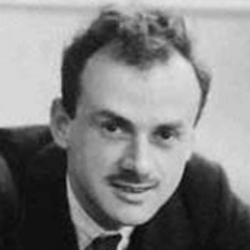
It appears to me that if one wants to make progress in mathematics, one should study the masters and not the pupils. - Niels Henrik Abel.
Nothing is better than reading and gaining more and more knowledge - Stephen William Hawking.
Offline
#828 2020-12-12 00:09:40
- Jai Ganesh
- Administrator

- Registered: 2005-06-28
- Posts: 52,164
Re: crème de la crème
794) Otto Stern
Otto Stern was born in Sorau, Upper Silesia, Germany, on February 17, 1888. In 1892 he moved with his parents to Breslau, where he attended high school. He began to study physical chemistry in 1906, receiving his Ph.D. degree from the University of Breslau in 1912. In the same year he joined Einstein at the University of Prague and later followed him to the University of Zurich, where he became Privatdocent of Physical Chemistry at the Eidgenössische Technische Hochschule in 1913.
In 1914 he went to the University of Frankfurt am Main as Privatdocent of Theoretical Physics, remaining there until 1921, except for a period of military service. From 1921 to 1922 he was Associate Professor of Theoretical Physics at the University of Rostock, becoming, in 1923, Professor of Physical Chemistry and Director of the laboratory at the University of Hamburg, where he remained until 1933. In that year he moved to the United States, being appointed Research Professor of Physics at the Carnegie Institute of Technology, Pittsburgh where he remained until 1945, then becoming professor emeritus.
His earliest work was in the field of theoretical physics, especially that of statistical thermodynamics and quantum theory, on which he has published important papers. After 1919, his attention was directed more to experimental physics. His development and application of the molecular beam method proved to be a powerful tool for investigating the properties of molecules, atoms and atomic nuclei. One of the early applications of this was the experimental verification of Maxwell’s law of velocity distribution in gases. He collaborated with Gerlach to work on the deflection of atoms by the action of magnetic fields on their magnetic moment, then went on to measure the magnetic moments of sub-atomic particles, including the proton. His work on the production of interference by rays of hydrogen and helium was a striking demonstration of the wave nature of atoms and molecules.
Dr. Stern was awarded an LL.D. by the University of California, Berkeley, 1930. He is a member of the National Academy of Sciences (USA), the American Association for the Advancement of Science, and the Philosophical Society. He holds foreign membership of the Royal Danish Academy of Sciences. He lived at Berkeley, California.
Otto Stern, (born Feb. 17, 1888, Sohrau, Ger. [now Zory, Pol.]—died Aug. 17, 1969, Berkeley, Calif., U.S.), German-born scientist and winner of the Nobel Prize for Physics in 1943 for his development of the molecular beam as a tool for studying the characteristics of molecules and for his measurement of the magnetic moment of the proton.
Stern’s early scientific work was theoretical studies of statistical thermodynamics. In 1914 he became a lecturer in theoretical physics at the University of Frankfurt and in 1923 a professor of physical chemistry at the University of Hamburg. Stern and Walther Gerlach performed their historic molecular-beam experiment at Hamburg in the early 1920s. By shooting a beam of silver atoms through a nonuniform magnetic field onto a glass plate, they found that the beam split into two distinct beams instead of broadening into a continuous band. This experiment verified the space quantization theory, which stated that atoms can align themselves in a magnetic field only in a few directions (two for silver), instead of in any direction, as classical physics had suggested. (See also Stern-Gerlach experiment.) In 1933 Stern measured the magnetic moment (strength of a subatomic particle’s magnetic property) of the proton by using a molecular beam and found that it was actually about 21/2 times the theoretical value.
In 1933, when the Nazis rose to power, Stern was compelled to leave Germany. He went to the United States, where he became research professor of physics at the Carnegie Institute of Technology, Pittsburgh. He remained there until his retirement in 1945.
Otto Stern died on August 17, 1969.
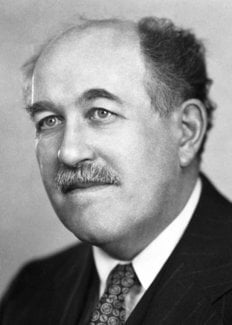
It appears to me that if one wants to make progress in mathematics, one should study the masters and not the pupils. - Niels Henrik Abel.
Nothing is better than reading and gaining more and more knowledge - Stephen William Hawking.
Offline
#829 2020-12-14 00:15:35
- Jai Ganesh
- Administrator

- Registered: 2005-06-28
- Posts: 52,164
Re: crème de la crème
795) John Macleod
John James Rickard Macleod was born on September 6, 1876 at Cluny, near Dunkeld, Perthshire, Scotland. He was the son of the Rev. Robert Macleod. When later the family moved to Aberdeen, Macleod went to the Grammar School there and later entered the Marischal College of the University of Aberdeen to study medicine.
In 1898 he took his medical degree with honours and was awarded the Anderson Travelling Fellowship, which enabled him to work for a year at the Institute for Physiology at the University of Leipzig.
In 1899 he was appointed Demonstrator of Physiology at the London Hospital Medical School under Professor Leonard Hill and in 1902 he was appointed Lecturer in Biochemistry at the same College. In that year he was awarded the McKinnon Research Studentship of the Royal Society, which he held until 1903, when he was appointed Professor of Physiology at the Western Reserve University at Cleveland, Ohio, U.S.A.
During his tenure of this post he was occupied by various war duties and acted, for part of the winter session of 1916, as Professor of Physiology at McGill University, Montreal.
In 1918 he was elected Professor of Physiology at the University of Toronto, Canada. Here he was Director of the Physiological Laboratory and Associate Dean of the Faculty of Medicine.
In 1928 he was appointed Regius Professor of Physiology at the University of Aberdeen, a post which he held, together with that of Consultant Physiologist to the Rowett Institute for Animal Nutrition, in spite of failing health, until his early death.
Macleod’s name will always be associated with his work on carbohydrate metabolism and especially with his collaboration with Frederick Banting and Charles Best in the discovery of insulin. For this work on the discovery of insulin, in 1921, Banting and Macleod were jointly awarded the Nobel Prize for Physiology or Medicine for 1923.
Macleod had, before this discovery, been interested in carbohydrate metabolism and especially in diabetes since 1905 and he had published some 37 papers on carbohydrate metabolism and 12 papers on experimentally produced glycosuria. Previously he had followed the earlier great work of von Mering and Minkowski, which has been published in 1889, and although he believed that the pancreas was the organ involved, he had not been able to prove exactly what part it played. Although Laguesse had suggested, in 1893, that the islets of Langerhans possibly produced an internal secretion which controlled the metabolism of sugar, and Sharpey-Schafer had, in 1916, called this hypothetical substance “insuline”, nobody had been able to prove its actual existence. Others had made extracts of the pancreas, some of which had proved to be active in affecting the metabolism of sugar, but none of these products had been found reliable, until Banting and Best, jointly with Macleod, could announce their great discovery in February 1922. The process of manufacturing the pancreatic extract which could be used for the treatment of human patients was patented; the financial proceeds of the patent were given to the British Medical Research Council for the Encouragement of Research, the discoverers receiving no payment at all. Subsequently, the active principle of these earlier pancreatic extracts, insulin, was isolated in pure form by John Jacob Abel in 1926, and eventually it became available as a manufactured product.
Earlier, in 1908, Macleod had done experimental work on the possible part played by the central nervous system in the causation of hyperglycaemia and in 1932 he returned to this subject, basing his work on the experiments done by Claude Bernard on puncture diabetes, and Macleod then concluded, from experiments done on rabbits, that stimulation of gluconeogenesis in the liver occurred by way of the parasympathetic nervous system.
Macleod also did much work in fields other than carbohydrate metabolism. His first paper, published in 1899, when he was working at the London Hospital, had been on the phosphorus content of muscle and he also worked on air sickness, electric shock, purine bases, the chemistry of the tubercle bacillus and the carbamates.
In addition he wrote 11 books and monographs, among which were his ‘Recent Advances in Physiology’ (with Sir Leonard Hill) (1905); ‘Physiology and Biochemistry of Modern Medicine’, which had reached its 9th edition in 1941; ‘Diabetes: its Pathological Physiology’ (1925); ‘Carbohydrate Metabolism and Insulin’ (1926); and his Vanuxem lectures, published in 1928 as the ‘Fuel of Life.’
In 1919 Macleod was elected a Fellow of the Royal Society of Canada, in 1923 of the Royal Society, London, in 1930 of the Royal College of Physicians, London, and in 1932 of the Royal Society of Edinburgh. During 1921-1923 he was President of the American Physiological Society, and during 1925-1926 of the Royal Canadian Institute. He held honorary doctorates of the Universities of Toronto, Cambridge, Aberdeen and Pennsylvania, the Western Reserve University and the Jefferson Medical College. He was an honorary fellow of the Accademia Medica, Rome, and also a corresponding member of the Medical and Surgical Society, Bologna, the Societá Medica Chirurgica, Rome, and the Deutsche Akademie der Naturforscher Leopoldina, Halle, and Foreign Associate Fellow of the College of Physicians, Philadelphia.
Macleod was a very successful teacher and director of research. His lucid lectures were delivered in an attractive manner and his pupils and research associates found him a sympathetic and stimulating worker, who demanded exact work and the humility that was a feature of his character. He would not tolerate careless work. He was much interested in the development of medical education and especially in the introduction of scientific methods of investigation into clinical work.
Outside the laboratory he was keenly interested in golf and gardening and the arts, especially painting. A sensitive, loyal and affectionate man of engaging personality, his serene spirit met with courage and optimism the painful and crippling disabilities which troubled the final years of his busy life.
Macleod was married to Mary McWalter. He died on March 16, 1935.
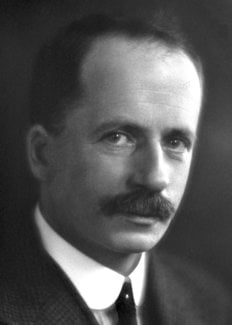
It appears to me that if one wants to make progress in mathematics, one should study the masters and not the pupils. - Niels Henrik Abel.
Nothing is better than reading and gaining more and more knowledge - Stephen William Hawking.
Offline
#830 2020-12-16 00:04:30
- Jai Ganesh
- Administrator

- Registered: 2005-06-28
- Posts: 52,164
Re: crème de la crème
796) Henrik Dam
(Carl Peter) Henrik Dam was born in Copenhagen on 21st February 1895, to Emil Dam, apothecary, and his wife Emilie (née Peterson), a teacher.
The young man graduated in chemistry from the Polytechnic Institute, Copenhagen in 1920, and the same year was appointed instructor (assistant) in chemistry at the School of Agriculture and Veterinary Medicine, progressing to instructor in biochemistry at the Physiological Laboratory of the University of Copenhagen, 1923. The following year saw his marriage, to Inger, née Olsen.
In 1925 Dam studied microchemistry in Graz (Austria) with F. Pregl. He became Assistant Professor at the Institute of Biochemistry, Copenhagen University, in 1928, and was promoted to Associate Professor at the same place in 1929, continuing to hold this post although he was working abroad part of the time, till 1941. On submitting a thesis Nogle Undersøgelser over Sterinernes Biologiske Betydning (Some investigations on the biological significance of the sterines) to the University of Copenhagen in 1934, Dam was awarded Ph.D. in Biochemistry.
To further his studies of the metabolism of sterols, Dam obtained a Rockefeller Fellowship and worked in Rudolph Schoenheimer’s Laboratory in Freiburg, Germany, during 1932-1933, and later worked with P. Karrer, of Zurich, in 1935. He discovered vitamin K while studying the sterol metabolism of chicks in Copenhagen. He studied this vitamin further with respect to its occurrence and biological function in animals and plants, as well as its application in human medicine, its fundamental chemical and physical properties and its purification and isolation – the latter part of this research being carried out in collaboration with P. Karrer. From the study of vitamin K arose the observation of some new symptoms in experimental animals, such as increased capillary permeability and colouration of adipose tissue, which turned out to be due to the ingestion of certain fats in the absence of vitamin E.
He was on a lecture tour of Canada and the United States under the auspices of the American Scandinavian Foundation in 1940-1941, this tour having been planned before the occupation of Denmark by German troops in April, 1940. He was able to carry out research in Woods Hole Marine Biological Laboratories during the summer and autumn of 1941, and at the University of Rochester, N.Y., between 1942-1945 as a Senior Research Associate – it was during this period that he was awarded the 1943 Nobel Prize for Physiology or Medicine – and at the Rockefeller Institute for Medical Research in 1945 as an Associate Member.
During his absence, Dam was appointed Professor of Biochemistry at the Polytechnic Institute, Copenhagen, in 1941, though the designation of his Chair at the Polytechnic Institute was changed to Professor of Biochemistry and Nutrition in 1950.
After his return to Denmark in 1946, Dam’s main research subjects were vitamin K, vitamin E, fats, cholesterol, and, in recent years, nutritional studies in relation to gall-stone formation. He has been leader of the Biochemical Division of the Danish Fat Research Institute from 1956 to 1962.
He has published or has collaborated in the publication of about 315 articles on biochemical problems, mainly concerning the biochemistry of sterols, vitamins K and E, and fats.
Professor Dam is a member of the Danish Academy of Technical Sciences (1947); the Royal Danish Academy of Sciences and Letters (1948); he was Correspondant Étranger, Académie Royale de Médecine de Belgique (1951); elected Hon. Fellow of the Royal Society, Edinburgh (1953); became Joint Honorary President, International Union of Nutritional Sciences in 1954, and was Corresponding Member of the German Association for Nutrition in 1961, following on the award of the Norman Medal by the German Association for Fat Research the previous year.
Henrik Dam died on April 17, 1976.
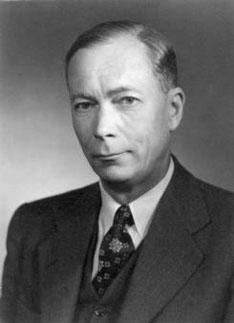
It appears to me that if one wants to make progress in mathematics, one should study the masters and not the pupils. - Niels Henrik Abel.
Nothing is better than reading and gaining more and more knowledge - Stephen William Hawking.
Offline
#831 2020-12-18 00:54:46
- Jai Ganesh
- Administrator

- Registered: 2005-06-28
- Posts: 52,164
Re: crème de la crème
797) Isidor Isaac Rabi
Isidor Isaac Rabi, (born July 29, 1898, Rymanów, Austria-Hungary [now in Poland]—died January 11, 1988, New York, New York, U.S.), American physicist who was awarded the Nobel Prize for Physics in 1944 for his invention (in 1937) of the atomic and molecular beam magnetic resonance method of observing atomic spectra.
Rabi’s parents settled in New York City in 1899. After earning a bachelor’s degree in chemistry at Cornell University in 1919, Rabi switched to physics and received his Ph.D. from Columbia University in 1927. He did postgraduate work in Europe and then joined the faculty of Columbia University in 1929, becoming professor of physics in 1937. From 1940 to 1945 Rabi was a leader of the group of scientists at the Massachusetts Institute of Technology, Cambridge, who helped in the development of radar. He was a member of the General Advisory Committee of the Atomic Energy Commission from 1946 to 1956 and succeeded J. Robert Oppenheimer as its chairman from 1952 to 1956. He originated the concept of the CERN international laboratory for high-energy physics in Geneva, Switzerland, and he was one of the founders of the Brookhaven National Laboratory, Upton, New York. He also built up one of the world’s finest physics departments at Columbia University, one which was to produce several Nobel Prize-winning physicists.
Rabi’s most important scientific work was his development (in the 1930s) of a method for measuring the magnetic properties of atoms, atomic nuclei, and molecules. The method is based on measuring the spin of the protons in the atom’s core, a phenomenon known as nuclear magnetic moments. With the application of his magnetic resonance method, several mechanical and magnetic properties, as well as the shape, of an atomic nucleus can be deduced. The precise measurements yielded by this method made possible such subsequent applications as the atomic clock, the maser, and the laser, as well as the nuclear magnetic resonance imaging used in diagnostic medicine. Rabi’s method provided the central technique for virtually all molecular and atomic beam experimentation.
(CERN, byname of Organisation Européene pour la Recherche Nucléaire, formerly (1952–54) Conseil Européen pour la Recherche Nucléaire, English: European Organization for Nuclear Research.)
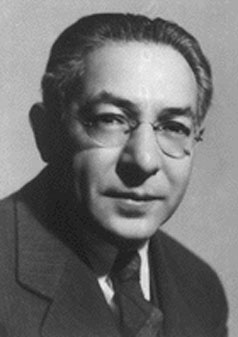
It appears to me that if one wants to make progress in mathematics, one should study the masters and not the pupils. - Niels Henrik Abel.
Nothing is better than reading and gaining more and more knowledge - Stephen William Hawking.
Offline
#832 2020-12-20 00:23:15
- Jai Ganesh
- Administrator

- Registered: 2005-06-28
- Posts: 52,164
Re: crème de la crème
798) Wolfgang Pauli
Wolfgang Pauli, in full Wolfgang Ernst Friedrich Pauli, (born April 25, 1900, Vienna, Austria—died Dec. 15, 1958, Zürich, Switz.), Austrian-born physicist and recipient of the 1945 Nobel Prize for Physics for his discovery in 1925 of the Pauli exclusion principle, which states that in an atom no two electrons can occupy the same quantum state simultaneously. Pauli made major contributions to quantum mechanics, quantum field theory, and solid-state physics, and he successfully hypothesized the existence of the neutrino.
In addition to his original work, he wrote masterful syntheses of several areas of physical theory that are considered classics of scientific literature. An even deeper influence was left by his personal interactions with other scientists, as recorded by numerous testimonies and a vast but never dull extant correspondence.
Education And Training
Pauli was raised among the intellectual elite of Vienna, a highly cosmopolitan city that was one of the most important centres of scientific advancement at the turn of the 20th century. Pauli’s godfather and mentor was the physicist-philosopher Ernst Mach, for whom he was given one of his middle names. Pauli later wrote that Mach’s influence in his upbringing was an “anti-metaphysical baptism.”
Having demonstrated outstanding mathematical abilities—Pauli taught himself the then new theory of relativity in his gymnasium years and published his first paper on the subject when he was 18—he enrolled in physics at the University of Munich, where he studied the most advanced physics of the day: the Bohr-Sommerfeld quantum theory of the atom, under Arnold Sommerfeld. Pauli distinguished himself not only for his brilliance but also for his exacting rigour and impertinent witticisms. A review of the theory of relativity that he wrote for Encyklopädie der mathematischen Wissenschaften (“Encyclopedia of Mathematical Sciences”) in 1921 gained him early fame and high praise from Albert Einstein.
After completing a doctorate in theoretical physics in 1921, Pauli worked as an assistant to Max Born at the University of Göttingen (1921–22) and as an assistant to Wilhelm Lenz at the University of Hamburg (1922). Pauli took a one-year leave to work at Niels Bohr’s Institute for Theoretical Physics (1922–23) in Copenhagen before returning to Hamburg in 1924 to complete his habilitation (a postdoctoral degree that is required in order to hold a professorship in most European universities).
The Birth Of Quantum Mechanics
With Pauli’s return to Hamburg in 1924 as a lecturer, he participated in the creation of quantum mechanics. He first solved (1924–25) certain vexing difficulties in the theory of atomic spectra by the introduction of a new quantum number—a quantity that was later called spin but that Pauli, in accordance with his philosophical rejection of visualizable models, called “a two-valuedness not describable classically.” He concluded that if a quantum state so defined was occupied by one electron, it was excluded for other electrons. This rule was eventually incorporated in the quantum mechanics of multiparticle systems and elevated to a principle, the exclusion principle. It thus became the foundation of the Fermi-Dirac statistics, the branch of quantum statistics developed by Italian physicist Enrico Fermi and English physicist P.A.M. Dirac, of quantum chemistry, and of the quantum theory of solids. In addition to this and other results in quantum mechanics, quantum field theory, and the theory of magnetism, Pauli assisted the work of others with his critical input. (He later came to be called the “conscience of physics” for his critical insights.) His analysis of the philosophical foundations and methodology of physics played a central role in the so-called Copenhagen interpretation of quantum mechanics, based on the renunciation of causality and on the affirmation of the positivist notion that physical concepts must be limited by the possibilities of observation.
Swiss Years
In 1928 Pauli obtained a professorship at the Swiss Federal Institute of Technology (Eidgenössische Technische Hochschule, or ETH) in Zürich, a position that he kept for the rest of his life and from which, together with German physicist Gregor Wentzel of the University of Zürich, he created a successful “school” of theoretical physics. The suicide of Pauli’s mother in 1927 and the end of his marriage with the Berlin dancer Käthe Deppner in 1930 led him to psychoanalysis, first as a therapy (an analyst was recommended to him by the Swiss psychologist Carl Gustav Jung) and then as a philosophical interest. He studied Jung’s ideas and their import on the scientific understanding of the physical world, which led him to distance himself from positivism. Although Pauli ended two years of personal therapy with Jung in 1934, when Pauli married Franciska (Franca) Bertram, the two men developed an extensive correspondence through the following years concerning physics and psychology.
In 1930 Pauli conjectured the existence of neutral particles (later called neutrinos) to preserve the conservation of energy in nuclear beta decay. (Experimental detection of the neutrino did not come until 1956.) His analysis of symmetries in quantum field theory resulted in the formulation in 1940 of the spin-statistics theorem, which established a necessary connection between the spin of a particle and its statistical properties.
Exile And Return
The outbreak of World War II and the possible threat of Nazi persecution (Pauli’s paternal grandparents were Jews) led him to accept a visiting professorship in 1940 at the Institute for Advanced Study in Princeton, N.J., U.S., where he worked mainly on meson theory. Although he became an American citizen in 1946, he went back to Europe that year, first to finally accept his 1945 Nobel Prize and then to return to his former position at ETH in Zürich. Back at ETH he worked on renormalization in quantum electrodynamics, in collaboration with his students, and on the CPT (charge, parity, time) symmetry in quantum field theory. He finally became a Swiss citizen in 1949.
In his later years Pauli’s involvement with philosophy intensified, while travels and epistolary exchanges kept alive his dialogue with Einstein, Bohr, and others. A rich correspondence with Jung, as well as several publications, testify to Pauli’s ongoing quest to understand “physis and psyche as complementary aspects of the same reality.”

It appears to me that if one wants to make progress in mathematics, one should study the masters and not the pupils. - Niels Henrik Abel.
Nothing is better than reading and gaining more and more knowledge - Stephen William Hawking.
Offline
#833 2020-12-22 00:04:36
- Jai Ganesh
- Administrator

- Registered: 2005-06-28
- Posts: 52,164
Re: crème de la crème
799) Sir Ernst Boris Chain
Sir Ernst Boris Chain, (born June 19, 1906, Berlin, Ger.—died Aug. 12, 1979, Mulrany, Ire.), German-born British biochemist who, with pathologist Howard Walter Florey (later Baron Florey), isolated and purified penicillin (which had been discovered in 1928 by Sir Alexander Fleming) and performed the first clinical trials of the antibiotic. For their pioneering work on penicillin Chain, Florey, and Fleming shared the 1945 Nobel Prize for Physiology or Medicine.
Chain graduated in chemistry and physiology from the Friedrich Wilhelm University of Berlin and then engaged in research at the Institute of Pathology, Charité Hospital, Berlin (1930–33). Forced to flee Germany because of the anti-Semitic policies of Adolf Hitler, he went first to the University of Cambridge, working under Sir Frederick G. Hopkins, and then (1935) to the University of Oxford, where he worked with Florey on penicillin.
Chain served as the director of the International Research Centre for Chemical Microbiology, Superior Institute of Health, Rome, from 1948 until 1961. He then joined the faculty of Imperial College, University of London, where he was professor of biochemistry (1961–73), professor emeritus and senior research fellow (1973–76), and fellow (1978–79). Chain was knighted in 1969.
In addition to his work on antibiotics, Chain studied snake venoms; the spreading factor, an enzyme that facilitates the dispersal of fluids in tissue; and insulin.
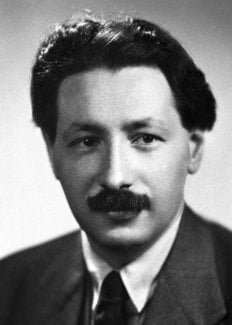
It appears to me that if one wants to make progress in mathematics, one should study the masters and not the pupils. - Niels Henrik Abel.
Nothing is better than reading and gaining more and more knowledge - Stephen William Hawking.
Offline
#834 2020-12-24 00:05:42
- Jai Ganesh
- Administrator

- Registered: 2005-06-28
- Posts: 52,164
Re: crème de la crème
800) Joseph Erlanger
Joseph Erlanger, (born Jan. 5, 1874, San Francisco, Calif., U.S.—died Dec. 5, 1965, St. Louis, Mo.), American physiologist, who received (with Herbert Gasser) the Nobel Prize for Physiology or Medicine in 1944 for discovering that fibres within the same nerve cord possess different functions.
Erlanger’s research into nerve function was the product of a profitable collaboration with Gasser, one of his students at the University of Wisconsin, Madison (1906–10). Soon after Erlanger’s appointment as professor of physiology at Washington University, St. Louis (1910–46), Gasser joined him there, and they began studying ways in which the recently developed field of electronics could be applied to physiological investigations.
By 1922 they were able to amplify the electrical responses of a single nerve fibre and analyze them with a cathode-ray oscilloscope that they had developed. The characteristic wave pattern of an impulse generated in a stimulated nerve fibre, once amplified, could then be seen on the screen and the components of the nerve’s response studied.
In 1932 Erlanger and Gasser found that the fibres of a nerve conduct impulses at different rates, depending on the thickness of the fibre, and that each fibre has a different threshold of excitability—i.e., each requires a stimulus of different intensity to create an impulse. They also found that different fibres transmit different kinds of impulses, represented by different types of waves.
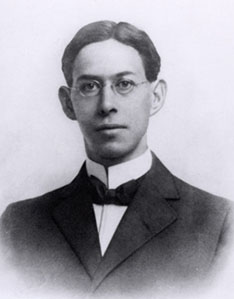
It appears to me that if one wants to make progress in mathematics, one should study the masters and not the pupils. - Niels Henrik Abel.
Nothing is better than reading and gaining more and more knowledge - Stephen William Hawking.
Offline
#835 2020-12-26 02:15:15
- Jai Ganesh
- Administrator

- Registered: 2005-06-28
- Posts: 52,164
Re: crème de la crème
801) Percy Williams Bridgman
Percy Williams Bridgman, (born April 21, 1882, Cambridge, Mass., U.S.—died Aug. 20, 1961, Randolph, N.H.), American experimental physicist noted for his studies of materials at high temperatures and pressures. For his work he was awarded the Nobel Prize for Physics in 1946.
Bridgman was the son of a journalist. He entered Harvard University in 1900, receiving his M.A. in 1905 and his Ph.D. in 1908. His experimental work on static high pressures was begun in 1908. It was at first confined to pressures of about 6,500 atmospheres, but he gradually extended the range to more than 100,000 atmospheres and ultimately reached about 400,000 atmospheres. In this unexplored field, he had to invent much of the equipment himself. His most important invention was a special type of seal, in which the pressure in the gasket always exceeds that in the pressurized fluid, so that the closure is self-sealing; without this his work at very high pressures would not have been possible. Later he was able to make full use of the new steels and of alloys of metals with heat-resistant compounds such as carboloy (tungsten carbide cemented in cobalt). Most of this work involved measurements of the compressibilities of liquids and solids, studies of the phase changes of solids under pressure (which included the discovery of high-pressure forms of ice), and measurements of the physical properties of solids (such as electrical resistance). As the range of pressures was extended, new and unexpected phenomena appeared; thus he discovered that the electrons in cesium undergo a rearrangement at a certain transition pressure.
Although Bridgman did not himself synthesize diamonds, despite repeated attempts, his experimentation led directly to their eventual synthesis by scientists of the General Electric Company in 1955. Many other minerals have been synthesized by the adoption and extension of his techniques; a new school of geology, based on experimental work at high pressures and temperatures, developed from his endeavours.
During a course of lectures that Bridgman gave in 1914 on advanced electrodynamics, he was struck by the obscurities and ambiguities inherent in defining scientific ideas. This led him to the “operational” approach to scientific meaning, discussed in his first philosophical book, The Logic of Modern Physics (1927, reprinted 1960). He defined physical concepts (e.g., length) in terms of the operations, both physical and mental, involved in their measurement. Since all measurements are relative to the frame of reference of the observer, concepts are also relative; length, for example, is a different concept when measured terrestrially than when measured astronomically. Bridgman asserted that it is meaningless to interpret physical concepts except insofar as they are capable of observation.
Bridgman rose steadily through the hierarchical levels of university status, becoming a full professor at Harvard in 1919, Hollis professor in 1926, and Higgins professor in 1950. He was awarded the Nobel Prize for Physics in 1946 for his discoveries in the domain of high-pressure physics. When he found himself dying of cancer in 1961, he took his own life.
Bridgman published more than 260 papers (only two of which listed a coauthor) and 13 books. His scientific papers have been published in Collected Experimental Papers, 7 vol. (1964). Among his many books are The Physics of High Pressure (1931) and Reflections of a Physicist (1950).
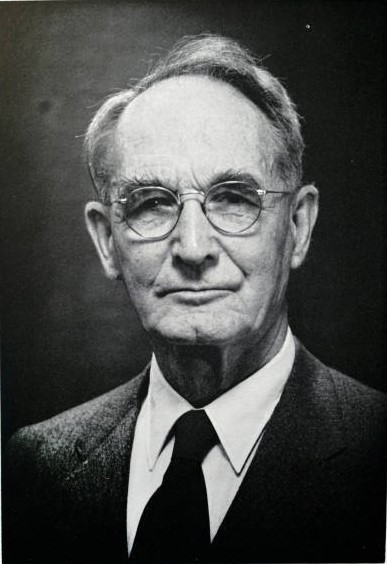
It appears to me that if one wants to make progress in mathematics, one should study the masters and not the pupils. - Niels Henrik Abel.
Nothing is better than reading and gaining more and more knowledge - Stephen William Hawking.
Offline
#836 2020-12-28 00:12:28
- Jai Ganesh
- Administrator

- Registered: 2005-06-28
- Posts: 52,164
Re: crème de la crème
802) James Batcheller Sumner
James Batcheller Sumner, (born Nov. 19, 1887, Canton, Mass., U.S.—died Aug. 12, 1955, Buffalo, N.Y.), American biochemist and corecipient, with John Howard Northrop and Wendell Meredith Stanley, of the 1946 Nobel Prize for Chemistry. Sumner was the first to crystallize an enzyme, an achievement that revealed the protein nature of enzymes.
After crystallizing the enzyme urease in 1926, Sumner went to Stockholm to study with Hans von Euler-Chelpin and Theodor Svedberg. He crystallized the enzyme catalase in 1937 and also contributed to the purification of several other enzymes. He was a professor at the Cornell University Medical School in Ithaca, New York, from 1929 to 1955 and became director in 1947 of the Cornell laboratory of enzyme chemistry, an institution that was established in recognition of his work.
James Batcheller Sumner was born at Canton, Mass., on Nov. 19, 1887, as the son of Charles Sumner and Elizabeth Rand Kelly. His ancestors were Puritans who came from Bicester, England, in 1636 and settled in Boston. His father owned a large country estate, while his grandfather had a farm and also a cotton factory. Young Sumner attended the Eliot Grammar School for a few years and then was sent to Roxbury Latin school. At school he was bored by almost every subject except physics and chemistry. He was interested in fire-arms and often went hunting. While grouse hunting at the age of 17, he was accidentally shot in the left arm by a companion; as a consequence, his arm had to be amputated just below the elbow. Having been left-handed, he then had to learn to do things with his right hand. The loss of his arm made him exert every effort to excel in all sorts of athletic sports, such as tennis, skiing, skating, billiards, and clay-pigeon shooting.
In 1906 Sumner entered Harvard College; he graduated in 1910, having specialized in chemistry. After a short interval of working in the cotton knitting factory owned by his uncle, a type of work that did not interest him in the least, he accepted a teaching post at Mt. Allison College, Sackville, New Brunswick. This was followed by an assistantship in chemistry at Worcester Polytechnic Institute, Worcester, Mass., in 1911, from which he resigned in 1912 in order to study biochemistry with Professor Otto Folin at Harvard Medical School. Although Folin advised him to take up Law, since he thought that a one-armed man could never make a success of chemistry, Sumner persisted and obtained his Ph.D. degree in June, 1914. A few months later while travelling in Europe he was stranded in Switzerland for about a month by the outbreak of World War I. During this time he received a cable inviting him to be Assistant Professor of Biochemistry at Cornell Medical School, Ithaca, N.Y., a post which he held until 1929, when he was made full Professor of Biochemistry.
Sumner’s research work at Cornell first centered around analytical methods; despite hard work he was unable to obtain any interesting results. He then decided to isolate an enzyme in pure form, an ambitious aim never achieved by anyone up till then, but a type of research suited to his scanty apparatus and very small laboratory staff. In particular, he worked with urease.
For many years his work was unsuccessful, but in spite of discouragement from colleagues who doubted whether any enzyme could ever be isolated in pure form he continued. In 1921, when his research was still in its early stages, he had been granted an American-Belgian fellowship and decided to go to Brussels to work with Jean Effront, who had written several books on enzymes. The plan fell through, however, because Effront thought Sumner’s idea of isolating urease was ridiculous. Back in Ithaca, he resumed his work until finally, in 1926, he succeeded (“I went to the telephone and told my wife that I had crystallized the first enzyme”, he wrote in an autobiographical note). His isolation and crystallization of urease met with mixed response; it was ignored or disbelieved by most biochemists, but it brought him a full professorship in 1929.
Gradually, recognition came. In 1937, he was given a Guggenheim Fellowship; he went to Uppsala and worked in the laboratory of Professor The Svedberg for five months. He was awarded the Scheele Medal in Stockholm in the same year. When Northrop, of the Rockefeller Institute, obtained crystalline pepsin, and subsequently other enzymes, it became clear that Sumner had devised a general crystallization method for enzymes. The opponents gradually admitted Sumner’s and Northrop’s claims – Willstätter last of all – and the crowning recognition came in 1946 when the Nobel Prize was awarded to Sumner and Northrop. In 1948, Sumner was elected to the National Academy of Sciences (USA).
Sumner was married three times: in 1915 he married Bertha Louise Ricketts whom he later divorced. They had six children, one of whom died at an early age. In 1931 he married Agnes Paulina Lundkvist, and finally in 1943 Mary Morrison Beyer. He died of cancer on August 12, 1955.
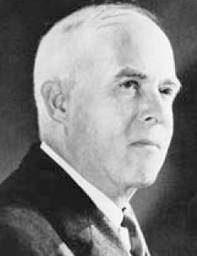
It appears to me that if one wants to make progress in mathematics, one should study the masters and not the pupils. - Niels Henrik Abel.
Nothing is better than reading and gaining more and more knowledge - Stephen William Hawking.
Offline
#837 2020-12-30 00:09:44
- Jai Ganesh
- Administrator

- Registered: 2005-06-28
- Posts: 52,164
Re: crème de la crème
803) Herbert S. Gasser
Herbert Spencer Gasser was born in Platteville, Wisconsin, on July 5, 1888, the son of Herman Gasser end Jane Elisabeth Griswold. After attending the State Normal School he went on to the University of Wisconsin, where he graduated A.B. in 1910 and A.M. in 1911. Here he studied physiology under Dr. Erlanger, with whom he was later to have such a fruitful collaboration. He then went to the Johns Hopkins Medical School for his clinical studies, obtaining his M.D. in 1915. After a year in pharmacology at Wisconsin he went to Washington University (St. Louis), where he was associated with Dr. Erlanger, becoming Professor of Pharmacology in 1921.
From 1923-1925 he was granted leave of absence to study in Europe, working with Profs. A. V. Hill, W. Straub and L. Lapicque and Sir Henry Dale. In 1931 he was appointed Professor of Physiology and Head of the Medical Department at Cornell University, New York City. From 1935 to 1953 he was Director of the Rockefeller Institute for Medical Research, being later a member emeritus of the Institute.
When he was at Johns Hopkins Medical School, Dr. Gasser worked for a time on a problem concerning blood coagulation. His major work, however, dates from his collaboration with Prof. Erlanger and was concerned with the electrophysiology of the nerves. The first paper from him on the subject dealt with action currents in the phrenic nerve. Later, the newly perfected low – voltage cathode – ray oscillograph was utilized in the work. Soon it was possible to demonstrate that the complexity of the oscillograph results was due to the different conductivity rates of different groups of nerve fibres. The work led to advances in our knowledge of the mechanism of pain and of reflex action and has inspired a large school of neurophysiologists.
Dr. Gasser was a co-author of the book ‘Electrical Signs of Nervous Activity (1937)’. He has also published, alone or with his collaborators, many scientific papers on neurophysical topics, being appointed an Editor of ‘The Journal of Experimental Medicine’ in 1936.
He held honorary doctorates from the Universities of Pennsylvania, Rochester, Wisconsin, Columbia, Oxford, Harvard, Paris, Washington (St. Louis), and Johns Hopkins. He was a doctor, honoris causa, of the Free University of Brussels and of the University of Paris, and honorary M.D. of the Catholic University of Louvain. He was a member of the National Academy of Sciences (USA), the Philosophical Society, the Association of American Physicians (Kobel Medallist, 1954), the American Physiological Society, and many others. He held honorary memberships of the Physiological Society (Great Britain) and Asociación Médica Argentina. He was a foreign member of several learned societies, including the Royal Society (London). Dr. Gasser was also President of the Board of Directors of the Russel Sage Institute of Pathology. He was unmarried.
Dr Gasser died on May 11th, 1963.
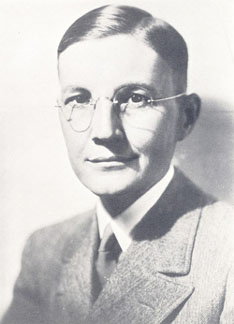
It appears to me that if one wants to make progress in mathematics, one should study the masters and not the pupils. - Niels Henrik Abel.
Nothing is better than reading and gaining more and more knowledge - Stephen William Hawking.
Offline
#838 2021-01-01 00:35:17
- Jai Ganesh
- Administrator

- Registered: 2005-06-28
- Posts: 52,164
Re: crème de la crème
804) John Howard Northrop
John Howard Northrop, (born July 5, 1891, Yonkers, N.Y., U.S.—died May 27, 1987, Wickenberg, Ariz.), American biochemist who received (with James B. Sumner and Wendell M. Stanley) the Nobel Prize for Chemistry in 1946 for successfully purifying and crystallizing certain enzymes, thus enabling him to determine their chemical nature.
Northrop was educated at Columbia University, where he received his doctorate in chemistry in 1915. In World War I he was a captain in the U.S. Army Chemical Warfare Service.
During World War I Northrop conducted research on fermentation processes suitable for the industrial production of acetone and ethyl alcohol. This work led to a study of enzymes essential for digestion, respiration, and general life processes. At that time the chemical nature of enzymes was unknown, but through his research Northrop was able to establish that enzymes obey the laws of chemical reactions. He crystallized pepsin, a digestive enzyme present in gastric juice, in 1930 and found that it is a protein, thus resolving the dispute over what enzymes are. Using the same chemical methods, he isolated in 1938 the first bacterial virus (bacteriophage), which he proved to be a nucleoprotein. Northrop also helped isolate and prepare in crystalline form pepsin’s inactive precursor pepsinogen (which is converted to the active enzyme through a reaction with hydrochloric acid in the stomach); the pancreatic digestive enzymes trypsin and chymotrypsin; and their inactive precursors trypsinogen and chymotrypsinogen.
Northrop was first an assistant at, and then a member of, the Rockefeller Institute for Medical Research in New York City from 1916 until his retirement in 1961, when he became professor emeritus. He was also a visiting professor of bacteriology and biophysics at the University of California at Berkeley (1949–58). His book ‘Crystalline Enzymes’ (1939) was an important text.
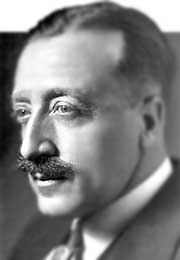
It appears to me that if one wants to make progress in mathematics, one should study the masters and not the pupils. - Niels Henrik Abel.
Nothing is better than reading and gaining more and more knowledge - Stephen William Hawking.
Offline
#839 2021-01-03 00:09:04
- Jai Ganesh
- Administrator

- Registered: 2005-06-28
- Posts: 52,164
Re: crème de la crème
805) Wendell Meredith Stanley
Wendell Meredith Stanley, (born Aug. 16, 1904, Ridgeville, Ind., U.S.—died June 15, 1971, Salamanca, Spain), American biochemist who received (with John Northrop and James Sumner) the Nobel Prize for Chemistry in 1946 for his work in the purification and crystallization of viruses, thus demonstrating their molecular structure.
Stanley obtained his doctorate from the University of Illinois in 1929. He worked from 1932 to 1948 at the Rockefeller Institute for Medical Research (now Rockefeller University) facilities in Princeton, N.J. In 1935 Stanley crystallized tobacco mosaic virus (TMV, the causative agent of a plant disease) and showed that it is a rod-shaped aggregate of protein and nucleic acid molecules. His work enabled other scientists, utilizing methods of X-ray diffraction, to ascertain unambiguously the precise molecular structures and the modes of propagation of several viruses.
While a professor of biochemistry and director of the laboratory for virus research at the University of California, Berkeley (1948–71), Stanley studied influenza viruses, for which he developed a preventive vaccine.
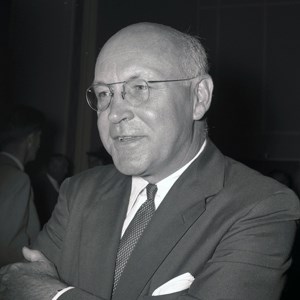
It appears to me that if one wants to make progress in mathematics, one should study the masters and not the pupils. - Niels Henrik Abel.
Nothing is better than reading and gaining more and more knowledge - Stephen William Hawking.
Offline
#840 2021-01-05 00:24:26
- Jai Ganesh
- Administrator

- Registered: 2005-06-28
- Posts: 52,164
Re: crème de la crème
806) Hermann J. Muller
Hermann Joseph Muller was born in New York City on December 21, 1890. His grandparents on his father’s side were of artisan and professional background and, though at first Catholics, had emigrated from the Rhineland during the wave of reaction of 1848 to seek the greater freedom of America. His father, born in New York, had continued the grandfather’s art metal works (the first in the U.S.A.), but was not by inclination a business man, and, although he died in 1900, he early awoke in the boy a lively interest in the nature of the universe and in the process of evolution, as well as in the welfare of men in general. The boy’s mother, Frances Lyons Muller, had also been born in New York City. Her parents had come from Britain, but were in the main descended from Spanish and Portuguese Jews who, as an after-effect of the Inquisition, had settled generations earlier in England and Ireland. She, as well as the father, encouraged in the boy a broad sympathy, an interest in living things, and a love of nature.
He was brought up in Harlem, first attending public school there and later Morris High School (also public) in the Bronx. There he and his classmates Lester Thompson and Edgar Altenburg founded what was perhaps the first high-school science club. Though his family (mother, sister Ada, and himself) had very limited means, they were fortunate in usually being able to spend their summers in the country while he was of school age. But he was enabled to attend a first class college – Columbia – only through the unexpected award of a scholarship (the Cooper-Hewitt), automatically granted to him in 1907 on the basis of entrance examination grades. He spent his summers, during his college years, at such jobs as bank runners and hotel clerk (the latter at $25 a month, plus board, for a 14-hour work-day).
At Columbia College he was before the end of his first year fascinated by the subject of biology. Reading by himself in the summer of 1908 R.H. Lock’s (1906) book on genetics, his interests became centered in that field. Courses soon afterwards taken under E. B. Wilson influenced him profoundly, as did also his reading, independently of courses, of works by Jacques Loeb and by other writers on experimental biology and physiology. In I909 he founded a students’ biology club, which was participated in, among others, by Altenburg, and by two students, Bridges and Sturtevant, who had entered Columbia a year later.
For his first two years of graduate work, since there was no opening offered to him in zoology, he managed to obtain a scholarship (1910-1911) and then a teaching fellowship (1911-1912) in physiology, the latter at Cornell Medical College, while keeping up with genetics on the side and doing various extra jobs, such as teaching English to foreigners in night school. Finally, however, he obtained a teaching assistantship in zoology at Columbia (1912-1915). The first summer (1911) of graduate work was spent in studies at Woods Hole, the rest in laboratory teaching at Columbia. During these five years he was seriously overworked. In all this period he was chiefly interested in the Drosophila work which Morgan had opened up, and from 1910 on he closely followed this research and was an intimate member of the group, although he did not have opportunity for much experimental work of his own on this material until 1912. Then he was able to begin his investigation of the simultaneous inter-relationships of many linked genes, which supported the theory of crossing-over and constituted his thesis. At the same time he undertook his analysis of variable, multiple-factor, characters by means of the device of «marker genes». This extended the validity both of chromosomal inheritance and of gene stability, and led later (1916) to his theory of balanced lethals.
Called to the Rice Institute, Houston, as Instructor, by Julian Huxley, he taught varied biological courses (1915-1918), and began studies on mutation. During this time and the two years following, when he was again at Columbia (1918-1920), now as instructor, he elaborated methods for quantitative mutation study. Altenburg, who had meanwhile moved to the Rice Institute, and he, partly in collaboration, obtained the first results in this field (1918-1919), including evidence that made probable an effect of temperature. He then (1920) returned to Texas, this time to the University, at Austin, as Associate Professor, and from 1925 on as Professor, teaching mainly genetics and evolution, and doing research mainly on mutation. He formulated in 1918, 1920, 1921, and 1926 the chief principles of spontaneous gene mutation as now recognized, including those of most mutations being detrimental and recessive, and being point effects of ultramicroscopic physico-chemical accidents arising in the course of random molecular motions (thermal agitation). At the same time he put forward the conception of the gene as constituting the basis of life, as well as of evolution, by virtue of its possessing the property of reproducing its own changes, and he represented this phenomenon as the cardinal problem of living matter.
In late 1926 he obtained critical evidence of the abundant production of gene mutations and chromosome changes by X-rays (published 1927). This opened the door to numerous researches, many of them carried on with the aid of students and co-workers, both at his own and other institutions, in the twenty years that followed. These have been briefly outlined in his Nobel Lecture, since they, together with the first discovery of the effect, constitute the work for which the Nobel Award was granted. They include studies on the mechanisms of the gene mutation effects and of the structural changes, on the roles which each kind of changes, when spontaneously occurring, play in evolution, and on the properties of genes and of chromosome parts (e.g. eu- versus hetero-chromatin), as disclosed by studies in which the chromosomes were broken and rearranged.
This later work was carried on at a succession of places. In 1932 he was awarded a Guggenheim Fellowship and for a year worked at Oscar Vogt’s institute in Berlin, in Timoféeff’s department of genetics. At the request of N. I. Vavilov, he then spent 3 1/2 years as Senior Geneticist at the Institute of Genetics of the Academy of Sciences of the U.S.S.R., first in Leningrad later (1934-1937) in Moscow, with a considerable staff of co-workers. With the rise of the Lysenko anti-genetics movement, he moved to the Institute of Animal Genetics, University of Edinburgh (1937-1940); here numerous graduate students, largely from India, took part. Then, from 1940 to 1945, I he did both teaching and research at Amherst College, being professor ad I interim there from 1942 to 1945. At Amherst he completed a large-scale experiment showing the relationship of ageing to spontaneous mutations. Finally, in 1945, he accepted a professorship in the Zoology Department at Indiana University, Bloomington, Indiana. Here he is again devoting his time chiefly to work on radiation-induced mutations, using them on the one hand for purposes of genetic analysis and on the other hand in the study of how radiation produces its biological effects.
One group of studies, participated in by J. I. and Ruby M. Valencia, I. H. Herskowitz, I. I. Oster, S. Zimmering, S. Abrahamson, A. Schalet, J. D. Telfer, Helen U. Meyer, Sara Frye, Helen Byers, and others, has been concerned with the influence on mutation frequency in the fruit fly Drosophila of diverse conditions and agents, when these were used before, after, or with radiation, or without radiation, on the influence of dose-rate and total dose of the radiation, and on the relative sensitivities of different cell stages to induced or natural mutagenesis. The types of mutations studied included «point» changes and both minute and gross structural changes of chromosomes. In another group of studies, since carried much further by E. A. Carlson, the interrelations among independently arisen mutations of the same gene were studied intensively, their intra-genic arrangement determined, and principles governing their functional interactions worked out.
The incidence of radiation damage to the bodies of the individuals that have themselves been exposed, as manifested in a long-term mortality or, in other words, life-span shortening or accelerated «ageing», was also investigated, first by I. I. Oster and then by W. Ostertag and Helen U. Meyer in collaboration with Muller. Evidence was obtained that these effects are for the most part consequences of losses of chromosomes from dividing somatic cells, after these chromosomes have been broken by the radiation. Natural ageing, however, gave evidence of not being caused in this way.
Another group of researches, also carried out with cooperation from students, more especially Margaret Lieb and S. L. Campbell, had concerned itself with problems of dominance and related subjects. It was shown that most mutant genes are incompletely recessive (not «overdominant») and are acted upon by selection while heterozygous. Studies of dominance in relation to «dosage compensation» disclosed that selection usually acts with high precision, tending to establish homozygous «normal» types. Most genetic variation within populations was deduced to depend on the recurrence of detrimental mutations which, balanced by selective elimination, constitute a «load». Estimates of this load were formed for both Drosophila and man (in the latter case in cooperation with Drs. Newton E. Morton and James F. Crow of the University of Wisconsin).
Included in the studies were calculations concerned with both the «spontaneous» and the radiation-induced mutation frequencies, and of the consequences of selection. Estimates were made of the effects of changes in mutation frequency, on the one hand, and of selection pressure, on the other hand, on the load. It was shown that eugenic policies are needed to avoid genetic degeneration in man as well as to bring about the genetic enhancement called for by his advances in technology and in other aspects of his culture. It was pointed out that modern reproductive technologies, such as germ-cell banks, and liberalized mores now make possible the exercise of voluntary germinal choice in human reproduction, and that this procedure affords the practical solution necessary to enable cultural evolution to promote the biological evolution of man instead of perverting it.
Prof. Muller will retire from Indiana University, in June, 1964, to take an appointment at the Institute for Advanced Learning in the Medical Sciences, The City of Hope, Duarte, California – for one year.
Muller has contributed over 300 articles on biological subjects to the scientific publications of learned societies. His principal books are ‘The Mechanism of Mendelian Heredity’ with T. H. Morgan and others, 1915 and 1922, ‘Out of the Night – a Biologist’s View of the Future’, 1935, 1936, and 1938, and ‘Genetics, Medicine and Man’ with C. C. Little and L. H. Snyder, 1947.
He was President of the 8th International Congress of Genetics in 1948 and of the American Humanist Association during 1956-1958. He has received Doctor of Science degrees from the Universities of Edinburgh (1940), Columbia (1949) and Chicago (1959), the honorary Doctor of Medicine from Jefferson Medical College (1963), the Annual Award of the American Association for Advancement of Science (1927), the Kimber Genetics Award (1955) and the Darwin-Wallace Commemoration Medal (1958). He was Pilgrim Trust Lecturer (Royal Society) and Messenger Lecturer (Cornell University) in 1945, and was designated Humanist of the Year by the American Humanist Association in 1963. He has also received honorary memberships and fellowships of many learned societies in the United States, England, Scotland, Sweden, Denmark, India, Japan, Italy, etc.
Muller married his first wife, formerly Jessie M. Jacobs, in 1923 – they had one son, David Eugene. In 1939 he married Dorothea Kantorowicz – they have one daughter, Helen Juliette.
Hermann J. Muller died on April 5, 1967.
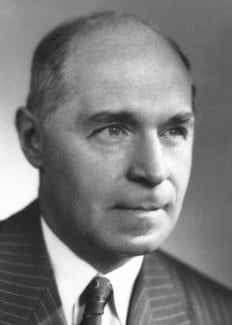
It appears to me that if one wants to make progress in mathematics, one should study the masters and not the pupils. - Niels Henrik Abel.
Nothing is better than reading and gaining more and more knowledge - Stephen William Hawking.
Offline
#841 2021-01-07 00:18:50
- Jai Ganesh
- Administrator

- Registered: 2005-06-28
- Posts: 52,164
Re: crème de la crème
807) Edward V. Appleton
Sir Edward Victor Appleton;
The Nobel Prize in Physics 1947;
Born: 6 September 1892, Bradford, United Kingdom;
Died: 21 April 1965, Edinburgh, Scotland.
Edward Victor Appleton was born in Bradford, England, on 6th September, 1892, the son of Peter and Mary Appleton. He received his early education at Hanson Grammar School. Bradford then took his B.A. degree in Natural Science at St. John’s College, Cambridge,, in 1913 and 1914, with physics for Part II. He won the Wiltshire Prize in 1913 and the Hutchinson Research Studentship in 1914, studying under Sir J.J. Thomson and Lord Rutherford. During the First World War he joined the West Riding Regiment, transferring later to the Royal Engineers. At the conclusion of hostilities he returned to Cambridge and took up research on radio waves.
Since 1919 Appleton has devoted himself to scientific problems in atmospheric physics, using mainly radio techniques. In 1920 he was appointed assistant demonstrator in experimental physics at the Cavendish Laboratory. Two years later he became sub-rector at Trinity College.
In 1924 Appleton was appointed Professor of Physics at London University and served there for twelve years, returning to Cambridge in 1936 to take the Chair of Natural Philosophy.
In the latter part of 1924 Appleton began a series of experiments which proved the existence of that layer in the upper atmosphere now called the ionosphere. With the co-operation of the British Broadcasting Corporation the Bournemouth transmitter shot waves up to the layer to see if they were reflected by it and came back. The experiment was entirely successful, for the reflection was proved. Moreover, by a slight change of wavelength it was possible to measure the time taken by the waves to travel to the upper atmosphere and back. The position of the reflecting layer was thus identified and its height (60 miles above ground) determined. The method used was what is now called “frequency-modulation radar”. The ionosphere was thus the first “object” detected by radiolocation, and this led to a great development of radio research and to a military invention of the greatest importance in World War IL
Further experiments which led to the possibility of round-the-world broadcasting were carried out and in 1926 he discovered a further atmospheric layer 150 miles above ground, higher than the Heaviside Layer and electrically stronger. This layer, named the Appleton Layer after him, reflects short waves round the earth. Three years later Appleton made an expedition to Northern Norway for radio research, studying the Aurora Borealis and in 1931 he published the results of further research on determining the height of reflecting layers of the ionosphere, including the use of a transmitter that sent out “spurts” of radio energy, and the photography of the received echo-signals by cathode ray oscillography. In 1932 he was elected Vice-President of the American Institute of Radio Engineers.
When hostilities broke out in 1939 Appleton was appointed Secretary of the Department of Scientific and Industrial Research – the senior British Government post concerned with physical science.
Researches into the atmospheric layers and cathode ray oscillography were developed for aircraft detection when Sir Robert Watson-Watt and his group of scientists, working on Appleton’s findings, brought Britain’s secret weapon to perfection. Commonwealth researchers working with Appleton in Britain all became leaders in the development of radiolocation in their home countries and Sir Robert Watson-Watt has stated that, but for Appleton’s scientific work, radar would have come too late to have been of decisive use in the Battle of Britain. Appleton was knighted in 1941, being created K.C.B., and he was a member of the Scientific Advisory Committee of the War Cabinet which, in 1941, advised the Government that the manufacture of an atomic bomb was feasible. Later, under Sir John Anderson, and as technical head of the Department of Scientific and Industrial Research, he assumed administrative control of all British work on the subject. He paid a visit to the United States and Canada in 1943 to arrange details of collaboration between American and British scientists. He continued research work even during this arduous period and has demonstrated that ionospheric reflecting power varies with sunspot activities. Also, working with Dr. J.S. Hey of the Ministry of Supply, he discovered that sunspots are powerful emitters of short radio waves. An important result of Appleton’s work has been the establishment of a system of ionospheric forecasts, in which more than 40 stations all over the world co-operate, enabling the production of the most suitable wavelengths for communication over any particular radio circuit.
In 1947, the year in which he received the Nobel Prize for Physics, he was also awarded the highest civilian decoration of the United States – the Medal of Merit – and was made an Officer of the French Legion of Honour. He was also awarded the Norwegian Cross of Freedom for his war work. Appleton’s work has been recognized by India, Norway and Denmark, and in 1948 he was appointed by the Pope to the Pontificial Academy of Science. He received the Albert Medal of the Royal Society of Arts, in 1950, for outstanding services to science and industrial research and was elected President of the British Association for the Advancement of Science for the Liverpoo1 meeting in 1953. He has been Chairman of the British National Committee for Radio-Telegraphy and Honorary President of the International Scientific Radio Union. During the International Geophysical Year 1957-1958 he played an active part in the world planning of radio experiments as Chairman of the International Geophysical Year Committee of the Internationa1 Scientific Radio Union, and continues to remain a scientific research worker. He is now engaged on the interpretation of l.G.V. ionospheric measurements on a global basis.
In 1956 Sir Edward gave the Reith Lectures of the B.B.C. on “Science and the Nation”. Recent awards made to him have been the Gunning Victoria Jubilee Prize of the Royal Society, Edinburgh, in 1960, and the Medal of Honour of the Institute of Radio Engineers of America in 1962.
In 1915 Appleton married Jessie, daughter of the Rev. J. Longson, and they have two daughters.
Sir Edward V. Appleton died on April 21, 1965.

It appears to me that if one wants to make progress in mathematics, one should study the masters and not the pupils. - Niels Henrik Abel.
Nothing is better than reading and gaining more and more knowledge - Stephen William Hawking.
Offline
#842 2021-01-09 00:13:05
- Jai Ganesh
- Administrator

- Registered: 2005-06-28
- Posts: 52,164
Re: crème de la crème
808) Sir Robert Robinson
Sir Robert Robinson was born at Rufford, near Chesterfield, Derbyshire on September 13th, 1886, the son of William Bradbury Robinson, a surgical dressing manufacturer who invented his own machines for the production of lint, bandages, etc., and the cardboard boxes for packaging them. He was educated at the Chesterfield Grammar School, Fulneck School, near Leeds, and at Manchester University where he graduated B.Sc. in 1906 and D.Sc. in 1910.
In 1912, he was appointed the first Professor of Pure and Applied Organic Chemistry in the University of Sydney. He returned to Britain in 1915 to take the Chair in Organic Chemistry at the University of Liverpool until 1920 when he accepted an appointment as Director of Research at the British Dyestuffs Corporation. One year later, he became Professor of Chemistry at St. Andrews and in 1922 he took the Chair in Organic Chemistry at Manchester University until 1928 when he accepted a similar post in the University of London. In 1930, he was appointed Waynflete Professor of Chemistry, Oxford University, where he remained until his retirement in 1955 when he was appointed Emeritus Professor and Honorary Fellow of Magdalen College. He has been a Director of the Shell Chemical Company and a chemical consultant since 1955.
Sir Robert has been a member of over thirty Government Committees and chairman of some of them. He was a United Kingdom delegate to the first Conference of UNESCO in 1947. He was knighted in 1939 and appointed to the Order of Merit in 1949.
Robinson’s extensive researches in organic chemistry have dealt not only with the structure and synthesis of many organic bodies, but also with the electrochemical mechanism of organic reactions. His interest in the chemical constitution of plant dyestuffs (anthocyanins) soon extended to another group of vegetable bodies, the alkaloids, where the whole series of his researches are remarkable for their brilliant syntheses. He contributed greatly towards the definition of the arrangement of atoms within molecules of morphine, papaverine, narcotine, etc. These discoveries led to the successful production of certain antimalarial drugs (they are reported in numerous scientific papers, mainly in the Journal of the Chemical Society).
Sir Robert, a Fellow of the Royal Institute of Chemistry and of the Royal Society was President of The Chemical Society, 1939-1941; of the Royal Society, 1945-1950; of the British Association for the Advancement of Science, 1955; and of the Society for the Chemical Industry, 1958. He is a Commandeur de la Légion d’Honneur and holds Honorary Doctorates of over twenty British and foreign universities. He has been honoured by The Chemical Society (Longstaff, Faraday and Flintoff Medals), the Royal Society (Davy, Royal and Copley Medals) and the Swiss, American, French and German Chemical Societies; he has also been awarded the Franklin Medal of the Franklin Institute of Philadelphia, the Albert Gold Medal of the Royal Society of Arts and the Medal of Freedom (U.S. Government). Sir Robert is Corresponding Member, Honorary Fellow, Foreign Member, Associate or Correspondant of almost fifty British and foreign learned societies.
In 1962, The Chemical Society honoured Sir Robert by establishing a Robert Robinson Lectureship, to be delivered biennially in lieu of the usual Presidential Address.
In 1912 Sir Robert married Gertrude Maud Walsh, a fellow student at Manchester University. They collaborated in several fields of chemical research, notably in a survey of anthocyanins. She died in 1954; they had one son and one daughter. In 1957, he married Stearn Sylvia Hillstrom (née Hershey) of New York.
In his younger days, Sir Robert was a keen mountaineer, having climbed in the Alps, Pyrenees, Norway and New Zealand, and he is an ardent chess player being President of the British Chess Federation, 1950-1953. His hobbies also include photography and music.
Sir Robert Robinson died on February 8, 1975.
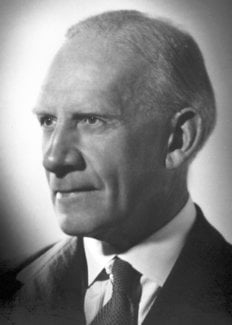
It appears to me that if one wants to make progress in mathematics, one should study the masters and not the pupils. - Niels Henrik Abel.
Nothing is better than reading and gaining more and more knowledge - Stephen William Hawking.
Offline
#843 2021-01-11 00:02:53
- Jai Ganesh
- Administrator

- Registered: 2005-06-28
- Posts: 52,164
Re: crème de la crème
809) Carl Cori
Carl Ferdinand Cori was born in Prague on December 5th, 1896. His father, Dr. Carl I. Cori, was Director of the Marine Biological Station in Trieste, and it was here that young Carl spent his childhood. He received an early introduction to science from his father and this was stimulated on summer visits to the Tyrol, to the home of his grandfather, Ferdinand Lippich, Professor of Theoretical Physics at Prague. He studied at the gymnasium in Trieste and graduated in 1914 when he entered the German University of Prague to study medicine. During World War I, he served as a lieutenant in the Sanitary Corps of the Austrian Army on the Italian front; he returned to University, where he studied with his future wife, Gerty, to graduate Doctor of Medicine in 1920. He spent a year at the University of Vienna and a year as assistant in pharmacology at the University of Graz until, in 1922, he accepted a position as biochemist at the State Institute for the Study of Malignant Diseases in Buffalo, New York. In 1931, he was appointed Professor of Pharmacology at the Washington University Medical School in St. Louis, where he later became Professor of Biochemistry.
Gerty Theresa Cori, née Radnitz, was born in Prague on August 15th, 1896. She received her primary education at home before entering a Lyceum for girls in 1906; she graduated in 1912 and studied for the University entrance examination, which she took and passed at the Tetschen Realgymnasium in 1914. She entered the Medical School of the German University of Prague and received the Doctorate in Medicine in 1920. She then spent two years at the Carolinen Children’s Hospital before emigrating to America with her husband, Carl, whom she married in 1920. They worked together in Buffalo and when he moved to St. Louis, she joined him as Research Associate. Gerty Cori was made Professor of Biochemistry in 1947.
The Cori’s have collaborated in most of their research work, commencing in their student days and stemming from their mutual interest in the preclinical sciences. Their first joint paper resulted from an immunological study of the complement of human serum.
In America, they first studied the fate of sugar in the animal body and the effects of insulin and epinephrine. The presence of glycolysis of tumours in vivo was demonstrated. Their work on carbohydrate metabolism passed from studies of whole animal to isolated tissues and, later, tissue extracts and isolated enzymes, some in crystalline form, were studied. In 1936, they isolated glucose-1-phosphate, «Cori ester», and traced its presence to the activity of the phosphorylase, which catalyzes the breakdown and synthesis of polysaccharides: this discovery made possible the enzymatic synthesis of glycogen and starch in vitro. Subsequently, phosphorylase and other enzymes were crystallized.
The Cori’s have been consistently interested in the mechanism of action of hormones and they have carried out several studies on the pituitary. They observed that the marked decrease in glycogen and lowering of blood sugar in hypophysectomized rats occurred with a concomitant increase in the rate of glucose oxidation. Subsequently, by a study of the action of hormones on hexokinase, they observed that some pituitary extracts inhibit this enzyme in vivo and in vitro and that insulin counteracts this inhibition.
In addition to their own highly original personal work, the Cori’s have always been a source of inspiration to their colleagues at the active centres of biochemical research which they have directed. They have contributed many articles to ‘The Journal of Biologica’l Chemistry and other scientific periodicals.
Carl Cori is a member, and Gerty Cori a late member, of the American Society of Biological Chemists, the National Academy of Sciences, the American Chemical Society and the American Philosophical Society. They were presented jointly with the Midwest Award (American Chemical Society) in 1946 and the Squibb Award in Endocrinology in 1947. In addition, Gerty Cori received the Garvan Medal (1948), the St. Louis Award (1948), the Sugar Research Prize (1950), the Borden Award (1951) and honorary Doctor of Science degrees from Boston University (1948), Smith College (1949), Yale (1951), Columbia (1954), and Rochester (1955). Carl Cori, a Member of the Royal Society ( London) and the American Association for the Advancement of Science, also received the Willard Gibbs Medal (1948), the Sugar Research Foundation Award (1947, 1950) and honorary Doctor of Science degrees from Western Reserve University (1946), Yale (1946), Boston (1948), and Cambridge (1949). He was President of Fourth International Congress of Biochemistry (Vienna, 1958).
Carl and Gerty Cori married in 1920 and had one son. They became naturalized Americans in 1928. They have always been fond of outdoor hobbies.
Dr Gerty Cori died on October 26th, 1957, and in 1960 Carl Cori married Anne Fitz-Gerald Jones.
.
Carl Cori died on October 20, 1984.
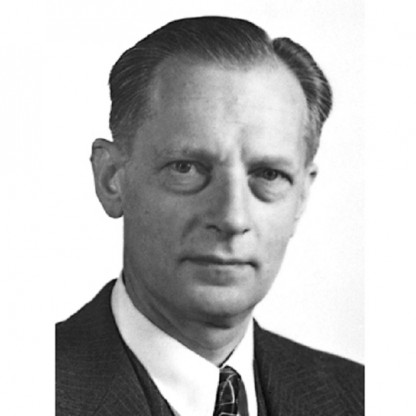
It appears to me that if one wants to make progress in mathematics, one should study the masters and not the pupils. - Niels Henrik Abel.
Nothing is better than reading and gaining more and more knowledge - Stephen William Hawking.
Offline
#844 2021-01-13 00:03:27
- Jai Ganesh
- Administrator

- Registered: 2005-06-28
- Posts: 52,164
Re: crème de la crème
810) Bernardo Houssay
Bernardo Alberto Houssay was born in Buenos Aires, Argentina, on April 10, 1887, one of the eight children of Dr. Albert and Clara (née Laffont) Houssay, who had come to Argentina from France. His father was a barrister. His early education was at a private school, the Colegio Británico. He then entered the School of Pharmacy of the University of Buenos Aires at the exceptionally early age of 14, graduating in 1904. He had already begun studying medicine and, in 1907, before completing his studies, he took up a post in the Department of Physiology. He began here his research on the hypophysis which resulted in his M.D.-thesis (1911), a thesis which earned him a University prize.
In 1910 he was appointed Professor of Physiology in the University’s School of Veterinary Medicine. During this time he had been doing hospital practice and, in 1913, became Chief Physician at the Alvear Hospital. In addition to this he was also in charge of the Laboratory of Experimental Physiology and Pathology in the National Department of Hygiene from 1915 to 1919. In 1919 he became Professor of Physiology in the Medical School at Buenos Aires University. He also organized the Institute of Physiology at the Medical School, making it a centre with an international reputation. He remained Professor and Director of the Institute until 1943. In this year the Government then in power deprived him of his post, as a result of his voicing his opinion that there should be effective democracy in the country. Although receiving many invitations from abroad, he continued his work in an institute which he organized with the support of funds contributed by the Sauberan Foundation and other bodies. This was the ‘Instituto de Biología y Medicina Experimenta’l, where he still remains as Director. In 1955 a new Government reinstated him in the University.
He has worked in almost every field of physiology, having a special interest in the endocrine glands. He has made a lifelong study of the hypophysis and his most important discovery concerns the role of the anterior lobe of the hypophysis in carbohydrate metabolism and the onset of diabetes. He has worked on many other topics in physiology and pharmacology, including the physiology of circulation and respiration, the processes of immunity, the nervous system, digestion, and snake and spider venoms.
Apart from his research, he has been active in promoting the advancement of university and medical education, and of scientific research, in Argentina.
Dr. Houssay is the author of over 500 papers and of several books. He has won many prizes ranging in time from that of the National Academy of Sciences, Buenos Aires, in 1923, to the Dale Medal of the Society of Endocrinology (London) in 1960.
He holds honorary degrees of twenty-five universities and is a member of the Argentine National Academy of Medicine, the Academy of Letters, the National Academy of Sciences of Buenos Aires, the Academy of Moral and Political Sciences of Buenos Aires, and of the Pontifical Academy of Sciences. He is honorary professor of 15 universities, foreign associate of 11 academies or learned societies, member (honorary or correspondent) of 38 Academies, 16 Societies of Biology, 11 of Endocrinology, 7 of Physiology and 5 of Cardiology. He has been decorated by the governments of several countries.
He married Dr. Maria Angelica Catan, a chemist, who died in 1962. They have three sons, Alberto, Hector, and Raul.
Bernardo Houssay died on September 21, 1971.
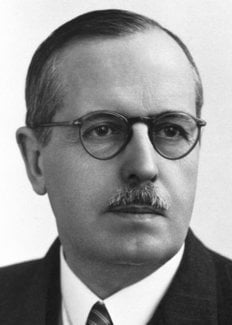
It appears to me that if one wants to make progress in mathematics, one should study the masters and not the pupils. - Niels Henrik Abel.
Nothing is better than reading and gaining more and more knowledge - Stephen William Hawking.
Offline
#845 2021-01-15 00:29:26
- Jai Ganesh
- Administrator

- Registered: 2005-06-28
- Posts: 52,164
Re: crème de la crème
811) Arne Tiselius
Arne Wilhelm Kaurin Tiselius was born August 10, 1902, in Stockholm. After the early loss of his father, the family moved to Gothenburg where he went to school, and after graduation at the local “Realgymnasium” in 1921, he studied at the University of Uppsala, specializing in chemistry. He became research assistant in The Svedberg‘s laboratory in 1925 and obtained his doctor’s degree in 1930 on a thesis “The moving-boundary method of studying the electrophoresis of proteins” (published in Nova Acta Regiae Societatis Scientiarum Upsaliensis, Ser. IV, Vol. 7, No. 4) and was appointed Docent (Assistant Professor) in Chemistry from 1930 on. During the years 1931-1935 Tiselius published a number of papers on diffusion and adsorption phenomena in naturally occurring base-exchanging zeolites, and these studies were continued during a year’s visit to H.S. Taylor’s laboratory in Princeton with support of a Rockefeller Foundation Fellowship. Stimulated by many contacts with American biochemists and physical chemists during this visit, Tiselius on his return to Uppsala resumed his interest in proteins, and the application of physical methods to biochemical problems in general. This led among other things to a much improved method of electrophoretic analysis, published in the Transactions of the Faraday Society, 33 (1937) 524. This method as applied to the study of serum proteins and to a number of other biochemical problems kept Tiselius and an increasing number of collaborators occupied for the following years. In 1938 a special research professorship was established for Tiselius through a donation to the University of Uppsala by Major Herbert Jacobsson and his wife. Some space was put at the disposal of the new professor in the Institute of Physical Chemistry (Prof. The Svedberg). In 1946 biochemistry was established as an independent department and in 1950-1952 obtained a new building, the present Institute of Biochemistry.
Under the leadership of Tiselius this institute has contributed to the development and improvement of a number of useful methods in biochemistry, such as electrophoresis, chromatography, phase partition, gel filtration, etc. These methods and others have been applied to studies of large molecular weight substances, chiefly proteins and enzymes, but also polysaccharides (dextran) and nucleic acids. There has always been a close contact between the methodological work and the research into special problems where the methods find their application. Tiselius took an active part in the reorganization of scientific research in Sweden in the years following World War II. Thus he was Chairman of the Swedish Natural Science Research Council 1946-1950, and Chairman of the Research Committee of the Swedish Cancer Society 1951-1955. He was President of the International Union of Pure and Applied Chemistry 1951-1955, became Vice President of the Nobel Foundation in 1947 and President since 1960. He has also served as member of the Nobel Committee for Chemistry since 1946.
He was married (1930) with Ingrid Margareta (Greta) Dalén, daughter of city judge Per Dalén of Gothenburg. They have two children: Eva (b. 1932), married to Dr. Torgny Bohlin, Lund; and Per (b. 1934), physician at the Academic Hospital, Uppsala.
Arne Tiselius died on October 29, 1971.

It appears to me that if one wants to make progress in mathematics, one should study the masters and not the pupils. - Niels Henrik Abel.
Nothing is better than reading and gaining more and more knowledge - Stephen William Hawking.
Offline
#846 2021-01-17 00:07:26
- Jai Ganesh
- Administrator

- Registered: 2005-06-28
- Posts: 52,164
Re: crème de la crème
812) Hideki Yukawa
Hideki Yukawa was born in Tokyo, Japan, on 23rd January, 1907, the third son of Takuji Ogawa, who later became Professor of Geology at Kyoto University. The future Laureate was brought up in Kyoto and graduated from the local university in 1929. Since that time he has been engaged on investigations in theoretical physics, particularly in the theory of elementary particles.
Between 1932 and 1939 he was a lecturer at the Kyoto University and lecturer and Assistant Professor at the Osaka University. Yukawa gained the D.Sc. degree in 1938 and from the following year he has been, and still is, Professor of Theoretical Physics at Kyoto University. While at Osaka University, in 1935, he published a paper entitled “On the Interaction of Elementary Particles. I.” (Proc. Phys.-Math. Soc. Japan, 17, p. 48), in which he proposed a new field theory of nuclear forces and predicted the existence of the meson. Encouraged by the discovery by American physicists of one type of meson in cosmic rays, in 1937, he devoted himself to the development of the meson theory, on the basis of his original idea. Since 1947 he has been working mainly on the general theory of elementary particles in connection with the concept of the “non-local” field.
Yukawa was invited as Visiting Professor to the Institute for Advanced Study at Princeton, U.S.A., in 1948, and since July, 1949 he has been Visiting Professor at Columbia University, New York City.
The learned societies of his native land have recognised his ability and he is a member of the Japan Academy, the Physical Society and the Science Council of Japan, and is Emeritus Professor of Osaka University. As Director of the Research Institute for Fundamental Physics in Kyoto University he has his office in the Yukawa Hall, which is named after him. He is also a Foreign Associate of the American National Academy of Sciences and a Fellow of the American Physical Society.
The Imperial Prize of the Japan Academy was awarded to Yukawa in 1940; he received the Decoration of Cultural Merit in 1943, and the crowning award, the Nobel Prize for Physics, in 1949.
A large number of scientific papers have been published by him and many books, including ‘Introduction to Quantum Mechanics (1946) and ‘Introduction to the Theory of Elementary Particles’ (1948), both in Japanese, have come from his pen. He has edited a journal in English, ‘Progress of Theoretical Physics’, since 1946.
An honorary doctorate of the University of Paris and honorary memberships of the Royal Society of Edinburgh, the Indian Academy of Sciences, the International Academy of Philosophy and Sciences, and the Pontificia Academia Scientiarum have marked the recognition he has earned in world scientific circles.
A civic honour was awarded to him when he was created Honorary Citizen of the City of Kyoto, Japan.
In 1932 he married, and he and his wife Sumiko have two sons, Harumi and Takaaki.
Hideki Yukawa died on September 8, 1981.
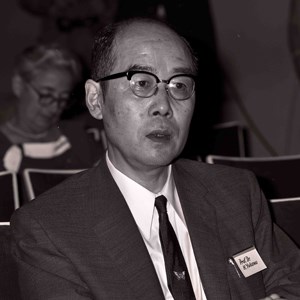
It appears to me that if one wants to make progress in mathematics, one should study the masters and not the pupils. - Niels Henrik Abel.
Nothing is better than reading and gaining more and more knowledge - Stephen William Hawking.
Offline
#847 2021-01-19 00:06:14
- Jai Ganesh
- Administrator

- Registered: 2005-06-28
- Posts: 52,164
Re: crème de la crème
813) William Giauque
William Francis Giauque (May 12, 1895 – March 28, 1982) was a Canadian-born American chemist and Nobel laureate recognized in 1949 for his studies in the properties of matter at temperatures close to absolute zero. He spent virtually all of his educational and professional career at the University of California, Berkeley.
Biography
William Francis Giauque was born in Niagara Falls, Ontario, on May 12, 1895.
As his parents were U.S. citizens, they returned to the U.S. where he attended public schools primarily in Michigan. Following the death of his father in 1908, the family returned to Niagara Falls, where he studied at the Niagara Falls Collegiate Institute. After graduation, he looked for work in various power plants at Niagara Falls both for financial reasons and to pursue a career in electrical engineering. He was widely unsuccessful.
Eventually, however, his application was accepted by the Hooker Electro-Chemical Company in Niagara Falls, New York, which led him to employment in their laboratory. He enjoyed the work, and decided to become a chemical engineer.
After two years of employment, he entered the College of Chemistry of the University of California, Berkeley, where he received a bachelor of science degree with honors in 1920. He entered graduate school at Berkeley, becoming a University Fellow (1920–1921) and a James M. Goewey Fellow (1921–1922). He received the Ph.D. degree in chemistry with a minor in physics in 1922.
Research
Although he began university study with an interest in becoming an engineer, he soon developed an interest in research under the influence of Professor Gilbert N. Lewis. Due to his outstanding performance as a student, he became an Instructor of Chemistry at Berkeley in 1922 and after passing through various grades of professorship, he became a full Professor of Chemistry in 1934. He retired in 1962.
Absolute zero
He became interested in the third law of thermodynamics as a field of research during his experimental research for his Ph.D. research under Professor George Ernest Gibson comparing the relative entropies of glycerine crystals and glass.
The principal objective of his researches was to demonstrate through range of appropriate tests that the third law of thermodynamics is a basic natural law. In 1926, he proposed a method for observing temperatures considerably below 1 Kelvin (1 K is −457.87 °F or −272.15 °C). His work with D.P. MacDougall between 1933 and 1935 successfully employed them.
He developed a magnetic refrigeration device of his own design in order to achieve this outcome, getting closer to absolute zero than many scientists had thought possible. This trailblazing work, apart from proving one of the fundamental laws of nature led to stronger steel, better gasoline and more efficient processes in a range of industries.
His researches and that of his students included a large number of entropy determinations from low temperature measurements, particularly on condensed gases. The entropies and other thermodynamic properties of many gases were also determined from quantum statistics and molecular energy levels available from band spectra as well as other sources.
His correlated investigations of the entropy of oxygen with Dr. Herrick L. Johnston, led to the discovery of oxygen isotopes 17 and 18 in the Earth's atmosphere and showed that physicists and chemists had been using different scales of atomic weight for years without recognising it.
Personal life
In 1932, Giauque married Dr. Muriel Frances Ashley and they had two sons. He died on March 28, 1982 in Berkeley, California.
(The third law of thermodynamics states as follows, regarding the properties of closed systems in thermodynamic equilibrium:
The entropy of a system approaches a constant value as its temperature approaches absolute zero.
This constant value cannot depend on any other parameters characterizing the closed system, such as pressure or applied magnetic field. At absolute zero (zero kelvins) the system must be in a state with the minimum possible energy. Entropy is related to the number of accessible microstates, and there is typically one unique state (called the ground state) with minimum energy. In such a case, the entropy at absolute zero will be exactly zero. If the system does not have a well-defined order (if its order is glassy, for example), then there may remain some finite entropy as the system is brought to very low temperatures, either because the system becomes locked into a configuration with non-minimal energy or because the minimum energy state is non-unique. The constant value is called the residual entropy of the system. The entropy is essentially a state-function meaning the inherent value of different atoms, molecules, and other configurations of particles including subatomic or atomic material is defined by entropy, which can be discovered near 0 K. The Nernst–Simon statement of the third law of thermodynamics concerns thermodynamic processes at a fixed, low temperature:
The entropy change associated with any condensed system undergoing a reversible isothermal process approaches zero as the temperature at which it is performed approaches 0 K.)

It appears to me that if one wants to make progress in mathematics, one should study the masters and not the pupils. - Niels Henrik Abel.
Nothing is better than reading and gaining more and more knowledge - Stephen William Hawking.
Offline
#848 2021-01-21 00:12:27
- Jai Ganesh
- Administrator

- Registered: 2005-06-28
- Posts: 52,164
Re: crème de la crème
814) Walter Hess
Walter Rudolf Hess was born in Frauenfeld, East Switzerland, on March 17, 1881. His father was a teacher of physics who allowed him, at a very early age, great freedom in dealing with apparatus, and taught him a proper carefulness. He also obtained a self-reliant gift of observation during excursions through forests and meadows, and on lakes and rivers, in the environment of the town of his birth. Here, he also visited the Gymnasium, completing the course in 1900. As a medical student, he visited Lausanne, Berne, Berlin, Kiel, and Zurich. In the University of the latter town he took his degree of Doctor of Medicine in 1906.
Although his aim always was to be a physiologist, external reasons first necessitated him to be an assistant in surgery, later in ophthalmology, and finally a practising opthalmologist. This detour, however, was by no means a disadvantage, as he learned, particularly in ophthalmology, to investigate and operate with precision. Also the contact with pathological physiology has proved in many respects a positive advantage.
In 1912 he took the great decision – although already the father of a family – of leaving a prosperous practice and going back to the position of assistant, this time in physiology itself. He obtained his training from Professor Gaule, a pupil of Ludwig, and from Professor Verworn in Bonn. In 1917 he was nominated – not without great opposition – Director of the Physiological Institute at Zurich, with corresponding teaching responsibilities. After the First World War, he visited many English institutes and got to know the English doyens of physiology such as Langley, Sherrington, Starling, Hopkins, Dale, and others.
The scientific interests of Professor Hess were primarily directed towards haemodynamics and, in connection with this, the regulation of respiration. While the experimental work on the subject of the central coordination of vegetative organs has in general been extended, a comprehensive picture has emerged of the representation of the vegetative nervous system in the diencephalon, which has been accorded distinction by the Nobel Prize.
During the experimental investigations of the diencephalon, setting aside the evidence of the regulatory representations, which control the activity of the internal organs in a coordinated fashion, somatomotor effects were observed relatively often. Following this, the symptoms were analysed in more detail, and in the process a relationship was demonstrated between supporting functions, automatic correcting movements, and the differentiated maintenance of tone in the skeletal musculature, as also were connections with actions due to the vestibular apparatus. Other investigations dealt with the control of parts of the forebrain (area orbitalis), in which Hess together with K. Akert has achieved some insight into the cortical representation of sight, and oral and pharyngeal regions.
When the professorship and the directorship of the Physiological Institute had to be given up in accordance with the regulations, Hess had the right to transfer all the material which had been acquired over the previous years to the rooms placed at his disposal in the Physiological Institute. The possibility also existed here of allocating a workplace; to co-workers, and of using the ‘cerebro-biological collection’, which he had built up, for research purposes. So the work went on, albeit restricted in terms of space, and above all of staff.
It had already occurred earlier to Hess that in the experiments on diencephalic stimulation modes of behaviour were occasionally evident in the experimental animal, which suggested a manifestation of psychic powers. Thus was the theme of ‘The Biological Aspect of Psychology’ (1962) established; this was taken up, after the fundamental findings on stimulation or extirpation at defined sites in the diencephalon had previously been described in an atlas (1956).
Out of this work on the integration of the experimental material in question concerning psychologically motivated expressions of the functional organization of the brain, among other things a contribution has been brought about towards bridging the gap which, until then, had yawned between physiology and psychiatry. At the same time in the monograph where his findings were summarized, the physiological foundations of the clinically important study of psychosomatic phenomena were dealt with, and the understanding of the mode of action of the so-called psychotropic drugs was advanced. Also, certain guiding principles for a closer contact between the investigation of behaviour and the type-specific organization of the central nervous system were included.
In the course of the last few years, the goal of satisfying the prerequisites for continuing and broadening research on the brain was finally pursued.
As the result of combined efforts, a special professorship for research on the brain with an independent institute at the University of Zurich has been established, of which his former co-worker, Professor K. Akert, has been elected director.
Walter Hess died on August 12, 1973.
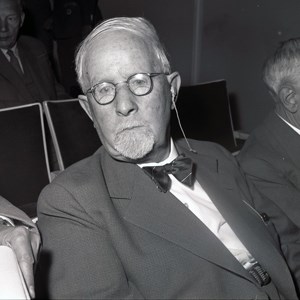
It appears to me that if one wants to make progress in mathematics, one should study the masters and not the pupils. - Niels Henrik Abel.
Nothing is better than reading and gaining more and more knowledge - Stephen William Hawking.
Offline
#849 2021-01-23 00:33:20
- Jai Ganesh
- Administrator

- Registered: 2005-06-28
- Posts: 52,164
Re: crème de la crème
815) António Egas Moniz
António Egas Moniz, in full António Caetano de Abreu Freire Egas Moniz, (born Nov. 29, 1874, Avança, Port.—died Dec. 13, 1955, Lisbon), Portuguese neurologist and statesman who was the founder of modern psychosurgery. With Walter Hess he was awarded the 1949 Nobel Prize for Physiology or Medicine for the development of prefrontal leucotomy (lobotomy) as a radical therapy for certain psychoses, or mental disorders.
As the University of Lisbon’s first professor of neurology (1911–44), Egas Moniz introduced and developed (1927–37) cerebral angiography (arteriography), a method of making visible the blood vessels of the brain by injecting into the carotid artery substances that are opaque to X rays. This technique has proved to be of considerable value in the diagnosis of intracranial diseases such as tumours of the pituitary gland.
Egas Moniz observed that certain psychoses, particularly schizophrenia and severe paranoia, involve recurrent thought patterns that dominate normal psychological processes. He reasoned that severing the nerve fibres between the frontal lobes, which are known to be closely associated with psychological responses, and the thalamus (a relay centre for sensory impulses at the centre of the brain) might force a transformation of existing thought patterns into more normal ones. In 1936 he and his associate, Almeida Lima, performed the operation known as a prefrontal leucotomy (lobotomy). The operation, though successful in eliminating the symptoms of persons suffering from apparently incurable psychoses, is now known to have serious side effects, and Egas Moniz cautioned that it was a radical procedure to be followed only after all other forms of treatment had proved to be ineffective. The use of lobotomies spread in the 1940s and ’50s and then declined owing to the use of tranquilizing drugs as a means to quiet agitated or distressed patients.
Egas Moniz was also active politically. He served several times between 1903 and 1917 in the Portuguese chamber of deputies, was Portuguese minister at Madrid (1917–18), and led the Portuguese delegation at the Paris Peace Conference (1918–19).
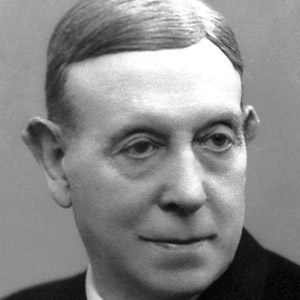
It appears to me that if one wants to make progress in mathematics, one should study the masters and not the pupils. - Niels Henrik Abel.
Nothing is better than reading and gaining more and more knowledge - Stephen William Hawking.
Offline
#850 2021-01-25 00:02:33
- Jai Ganesh
- Administrator

- Registered: 2005-06-28
- Posts: 52,164
Re: crème de la crème
816) Cecil Frank Powell
Cecil Frank Powell, (born December 5, 1903, Tonbridge, Kent, England—died August 9, 1969, Casargo, Italy), British physicist and winner of the Nobel Prize for Physics in 1950 for his development of the photographic method of studying nuclear processes and for the resulting discovery of the pion (pi-meson), a heavy subatomic particle. The pion proved to be the hypothetical particle proposed in 1935 by Yukawa Hideki of Japan in his theory of nuclear physics.
In 1928 Powell was appointed research assistant at the Henry Herbert Wills Physical Laboratory at the University of Bristol. He became professor of physics at Bristol in 1948 and director of the Wills Laboratory in 1964. Between 1939 and 1945 he developed the necessary techniques for using sensitive photographic emulsions to record the paths of cosmic rays. In plates exposed at the top of high mountains or sent up in high-altitude balloons, cosmic-ray interactions were recorded, and in 1947 the data revealed the existence of the pion (π+) as well as the process whereby it decays into two other particles, an antimuon (mu-meson) and a neutrino. Powell also discovered the antipion (π−) and, in 1949, the modes of decay of kaons (K-mesons).
Cecil Frank Powell was born on December 5th, 1903, at Tonbridge, Kent, where his father, Frank Powell, was one of a family of gunsmiths who had long practised the trade in the town. His grandfather, George Bisacre, had established a private school in the nearby town of Southborough and his family ties and influences therefore tended to encourage a regard for the value both of learning and the practical arts.
He attended a local elementary school and won a scholarship, at the age of eleven, to Judd School, Tonbridge. From there he won open scholarships to Sidney Sussex College, Cambridge, where he graduated with First Class Honours in the Natural Science Tripos (1924-1925).
As a postgraduate student, Powell worked in the Cavendish Laboratory under C.T.R. Wilson and Lord Rutherford until 1927 when he gained his Ph.D. and moved to the University of Bristol as Research Assistant to A.M. Tyndall in the H.H. Wills Physical Laboratory. He was eventually appointed lecturer, then reader and, in 1936, he visited the West Indies as seismologist of an expedition investigating volcanic activity. He returned to Bristol in the following year and in 1948 he was established as Melville Wills Professor of Physics.
Powell was Director of a European expedition for making high-altitude balloon flights in Sardinia (1952) and in the Po Valley (1954, 1955, and 1957).
His first researches at the Cavendish Laboratory concerned condensation phenomena and it led indirectly to an explanation of the anomalously high rate of discharge of steam through nozzles. He showed this to be due to the existence of supersaturation in the rapidly expanding steam and his results were found to have a bearing on the design and performance of the steam turbine.
At Bristol he devoted years of patient work to the development of accurate techniques for measuring the mobility of positive ions and to establishing the nature of the ions in most of the common gases. After his sojourn in the Caribbean, he returned to work on the construction of a math generator for accelerating fast protons and deuterons – employing them in conjunction with a Wilson chamber, to study neutron-proton scattering. In 1938, he undertook experiments in cosmic radiation and employed methods of directly recording the tracks of the particles in photographic emulsions and, when the math machine came into operation, he employed similar methods for determining the energy of neutrons, that is, by observing the tracks of the recoiling protons. The length of the track of a charged particle in the emulsion was found to give an accurate measure of its range and the great advantages of this method for experiments in nuclear physics were soon clearly established.
This development led him to a study of the scattering and disintegration processes produced by a beam of high-energy deuterons and he later returned, with the development of photographic emulsions of increased sensitivity, to experiments on cosmic radiation: in 1947 heavy mesons were discovered and many of their more important properties established.
Powell has contributed numerous papers to learned societies on the discharge of electricity in gases, and on the development of photographic methods in nuclear physics. He is a co-author of ‘Nuclear Physics in Photographs’ (1947) and ‘The Study of Elementary Particles by the Photographic Method’ (1959).
Prof. Powell was elected Fellow of the Royal Society in 1949: he was awarded the Hughes Medal in the same year and the Royal Medal in 1961. He has received honorary Doctor of Science degrees from the Universities of Dublin, Bordeaux and Warsaw, and he is a Foreign Member of the Academy of Sciences of the U.S.S.R. He was Vernon Boys Prizeman and Honorary Fellow of the Physical Society (1947), and he served on the Scientific Policy Committee of the European Organization for Nuclear Research (Geneva, 1961).
Powell married Isobel Therese Artner, who has assisted him in his researches, in 1932; they have two daughters. His chief recreations are squash racquets and tennis.
Cecil Powell died on August 9, 1969.
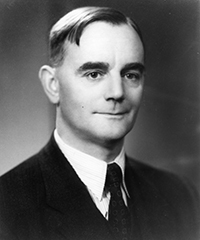
It appears to me that if one wants to make progress in mathematics, one should study the masters and not the pupils. - Niels Henrik Abel.
Nothing is better than reading and gaining more and more knowledge - Stephen William Hawking.
Offline